The best headphone DACs 2025: top desktop and portable DACS to make your music sing, all tested by TechRadar

Our team of audio experts has tested all of the best DACs you can buy. Every option in this guide has been rigorously reviewed using high quality audio sources and premium headphones to ensure they deliver audiophile-grade performance. That's why you can trust this list, it's only filled with the cream of the crop. Any one of the best headphone DACs in this guide will significantly upgrade your audio setup. Whether it’s for your smartphone or home hi-fi system, you'll experience a noticeable improvement in sound quality.
A DAC, which stands for digital-to-analog converter, is a must-have for transforming digital audio files into the analog sound we're able to hear. Every digital music source includes its own built-in DAC, since our ears can’t process digital signals directly. But the default components are often cheap and not optimized for high-fidelity sound.
That’s why people turn to the best desktop and portable DACs to elevate their audio. These dedicated devices provide superior digital-to-analog conversion, meaning they're able to better handle the high-resolution audio formats that built-in DACs in smartphones and laptops often struggle with. The result is clearer, more detailed, and dynamic sound. Read our hi-res audio explainer to find out why this matters.
You'll get the best experience when you pair a DAC with a pair of the best wired headphones and listen to your favorite tracks from one of the best music streaming services. So, whether you want to elevate your listening experience with the best headphones or simply want crisper, more immersive sound, all of the DACs in this guide bring you a premium audio upgrade.

I've reviewed over 150 audio products since becoming a tech journalist, ranging from super-budget earbuds to high-end Hi-Res Audio music players. Before joining TechRadar, I spent three years at What Hi-Fi? testing everything the world of audio had to offer; before that, I was a professional dancer. My love of music ties it all together.
October 23, 2025
Refreshed the introduction. Added the FiiO BTR17 as a new entry, our 'best wireless option' pick. Switch the iFi iDSD Diablo 2 out as our 'money no object' entry for the iFi iDSD Valkyrie. Added several new options to the 'also consider' section, including the FiiO QX13, Campfire Audio Relay and that Diablo 2, as it's still well worth considering.
Best portable DACs of 2025
Why you can trust TechRadar
The best budget portable USB-C DAC

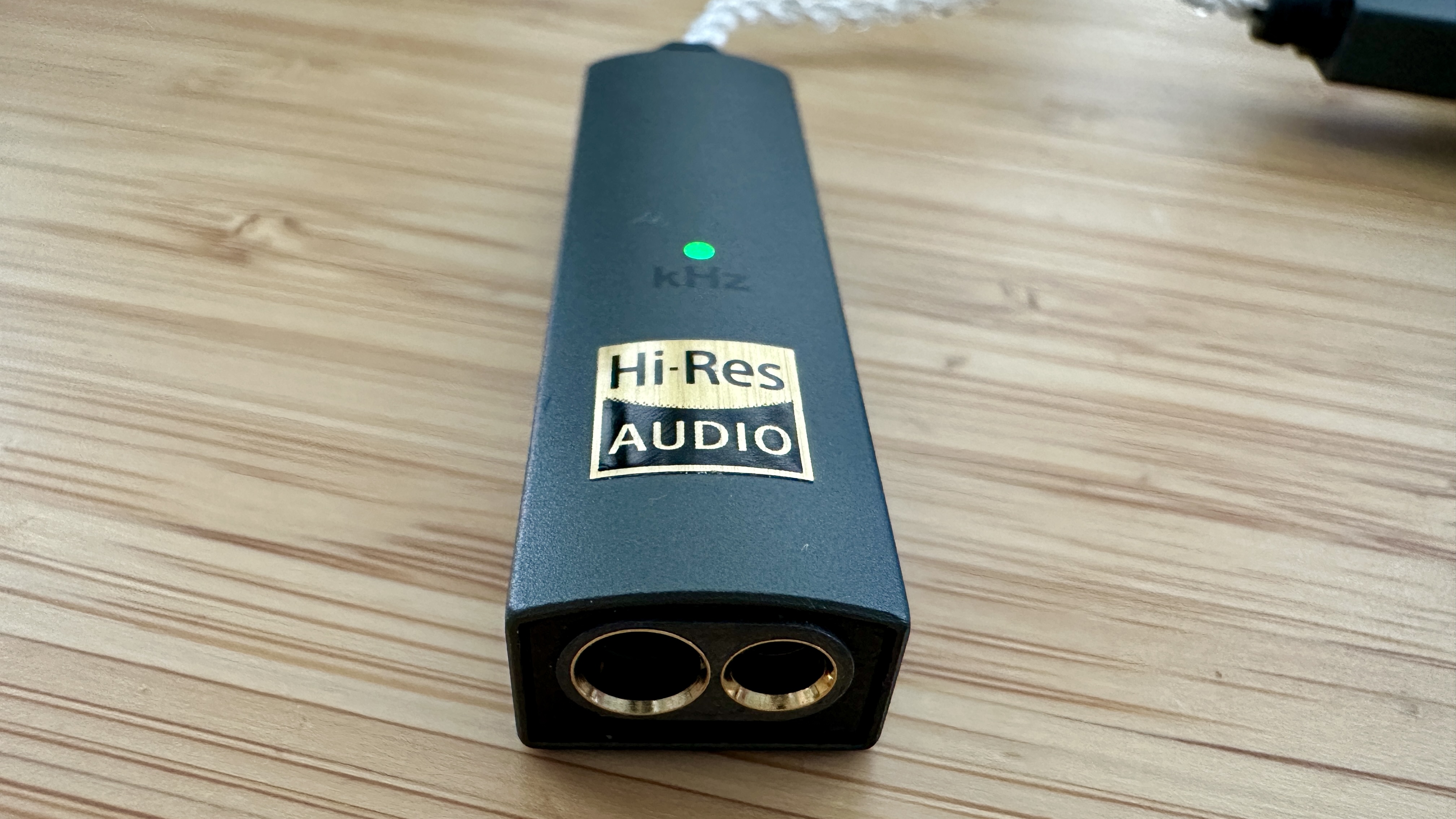

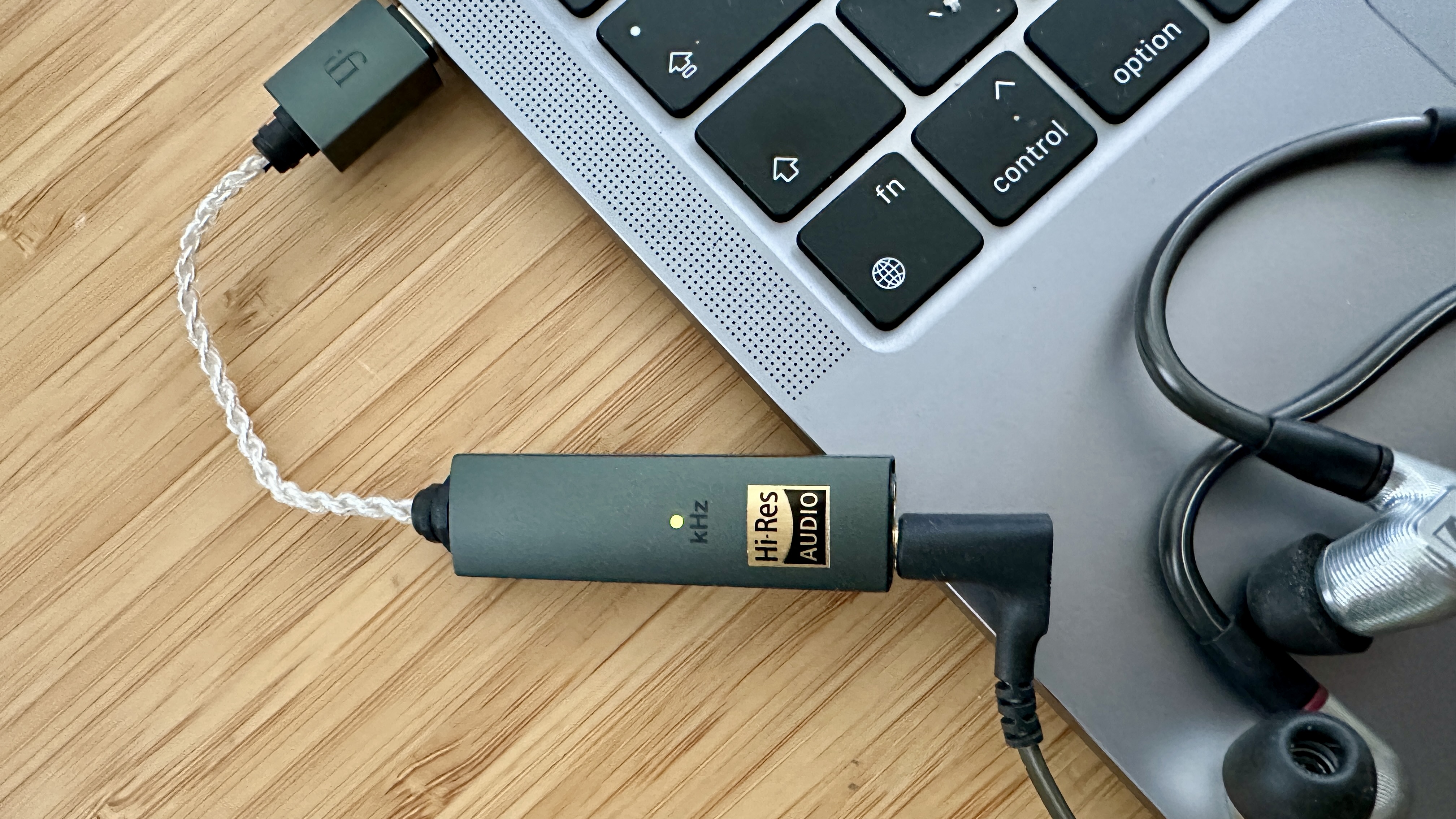

Specifications
Reasons to buy
Reasons to avoid
✅ You care about portability: This is a small, compact, no-frills device. If you want a simple way to get the best audio, this is it.
✅ You have a decent pair of headphones: All of the recommendations in this guide truly shine with great headphones, especially this DAC.
❌ You want something super durable: There's nothing wrong with the cable here, we just thought it felt a little vulnerable during testing.
❌ You don't need the 4.4mm balanced output: If that's the case, you might be better off considering the smaller, lighter iFi GO Link USB DAC.
The iFi GO Link Max is a newer addition to our guide and instantly takes the top spot, as it's an accomplished little device that makes a hi-res audio player using your average smartphone for a very affordable and great value price.
It's similar to other GO Link models before it from the iFi brand, but this version also adds a 4.4mm headphone out and gets rid of MQA (the Master Quality Authenticated audio format) compatibility, which we said in our review is no major loss for most people.
This Max version is a little larger and more expensive than the iFi GO Link USB DAC but c'mon, it's not like it's big – it'll still slip into a pocket nicely. We also noted during our testing that any added bulk here isn't really noticeable thanks to the sleek-looking metal casing. The only design downside is the exposed braided cable that connects the DAC to the part that then plugs into a source device, which felt a little vulnerable. We're not saying it'll break, but we wouldn't class this as a durable device.
The iFi GO Link Max performed incredibly well throughout our testing, you'll just need a decent pair of headphones to get the most from it. It's positive and punchy, revealing impressive levels of detail and dynamism.
The (extra) good news is, it offers significant value for money and, by DAC standards, is an affordable pick that won't disappoint anyone looking to seriously upgrade the sound of their computer of phone. In our review, we called the difference "remarkable", which pretty much says it all. Not bad for something that comes in under $80 / £80, eh?
Read the full iFi GO Link Max review
The best budget desktop portable DAC
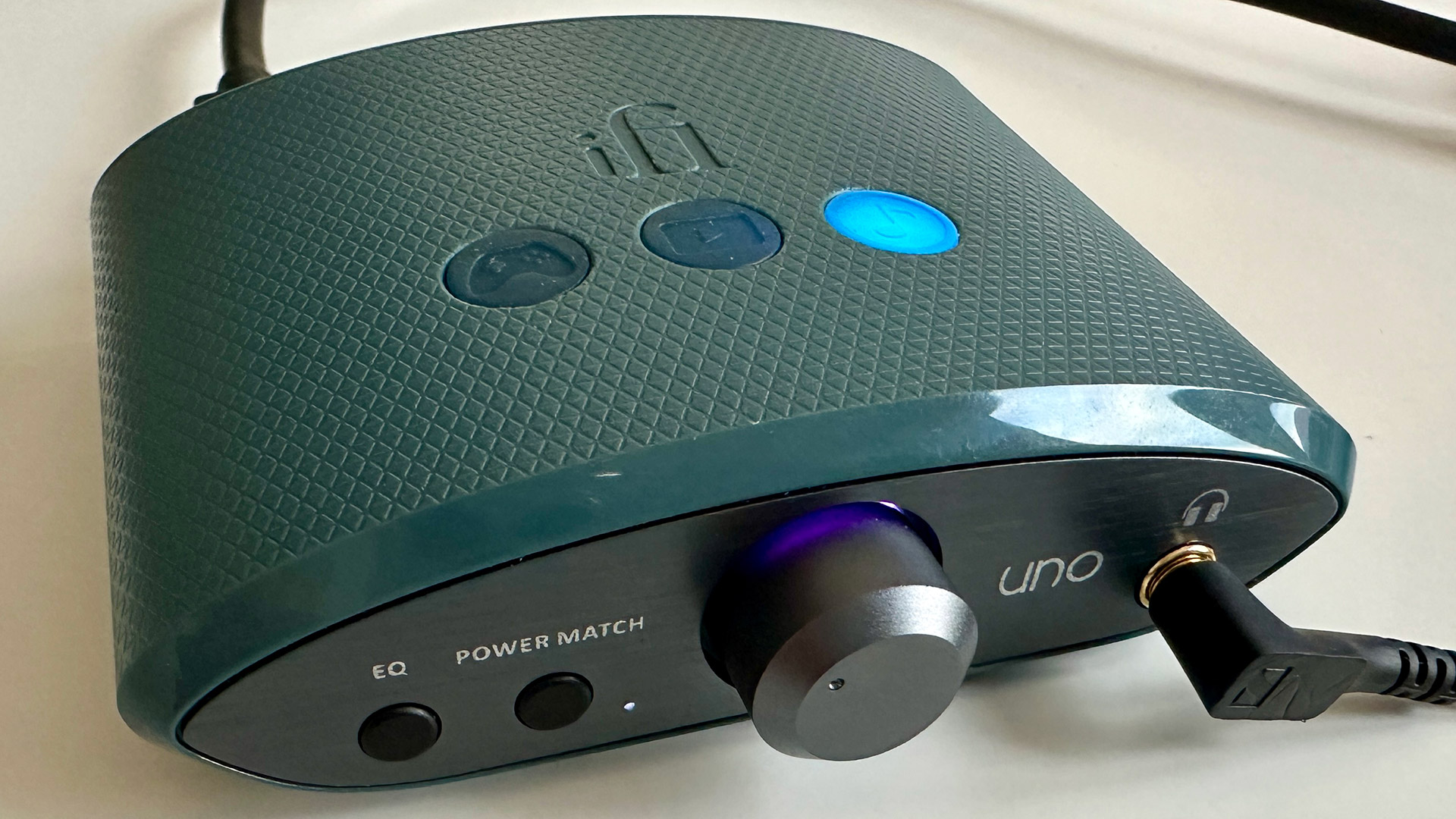
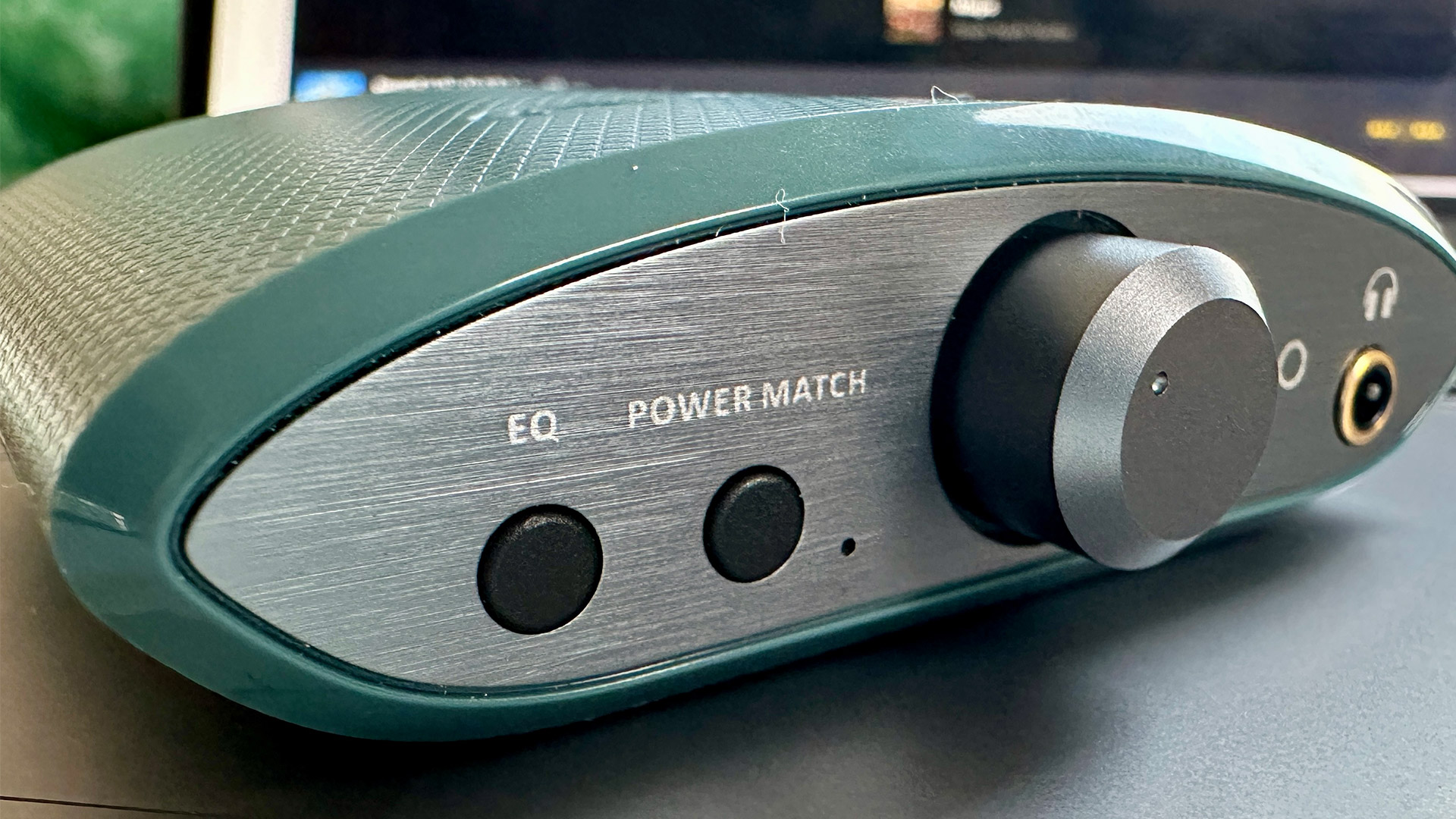

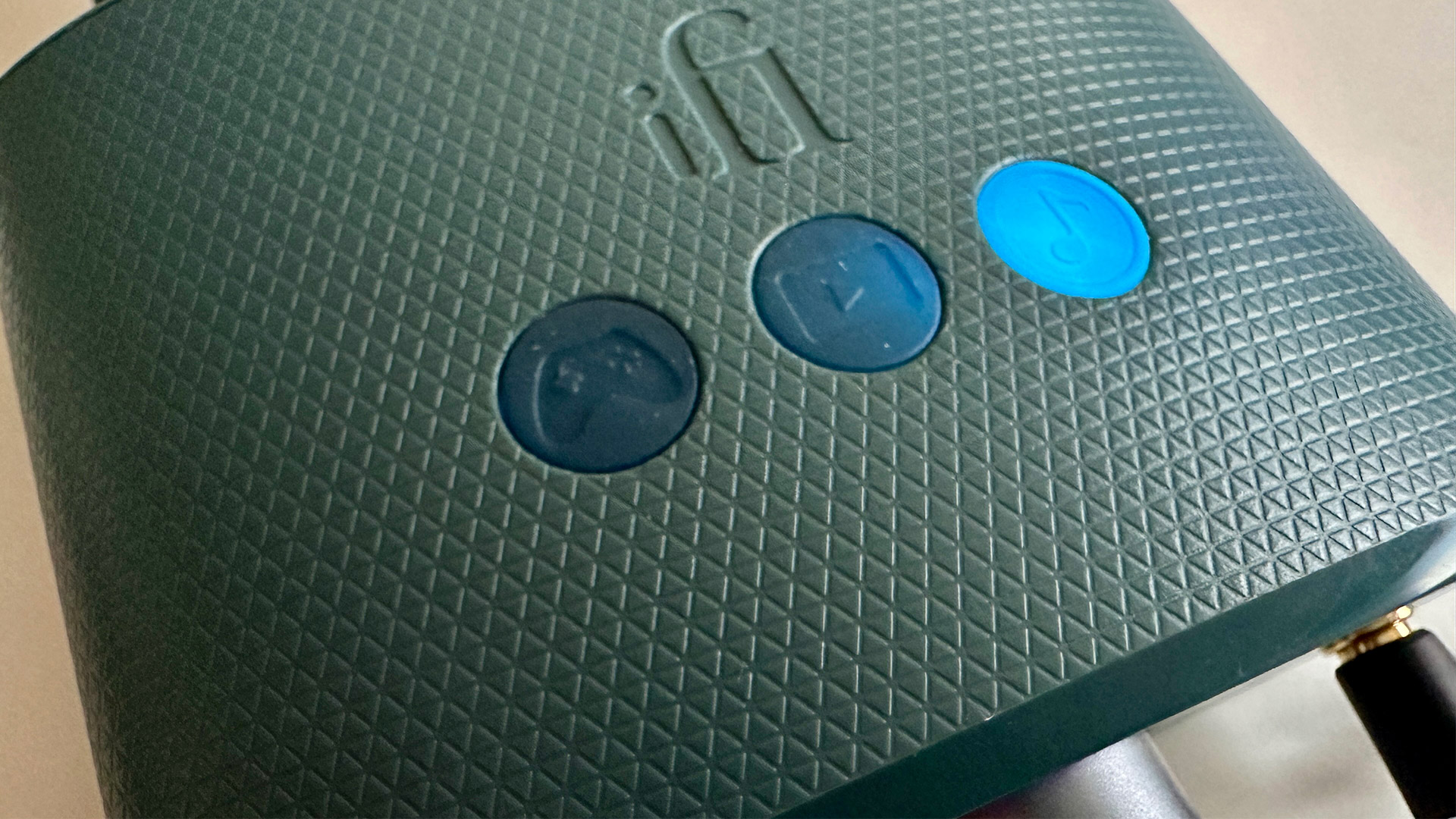

Specifications
Reasons to buy
Reasons to avoid
✅ You prefer laptop-based listening: Let your computer handle storage and streaming while this takes care of digital-to-analog conversion.
✅ You have a range of hi-res audio formats: The iFi Uno can handle everything you throw at it.
❌ You like extreme volumes: It performs best at moderate listening volumes, so very loud or very quiet playback won't showcase its full potential.
❌ You want a premium look and feel: The design and build works perfectly well, but it's basic.
The iFi Uno DAC is one of the most affordable options on our list, but during our testing we were surprised to find that the improvements it makes to your sound experience are massive.
We learned that, as long as you don’t intend to listen at either very quiet or very loud volume levels, the sound of your laptop once the Uno is plugged in is improved dramatically. We think even those who don't consider themselves audiophiles will recognize the improvement and agree that it's up there with the best portable DACs.
In our iFi Uno review we commended this portable DAC for its detail retrieval, low-frequency extension, sound staging, transient response and stereo focus. These are all essential qualities that go towards delivering a genuinely enjoyable and convincing sound reproduction.
Read our full iFi Uno review
The best premium portable DAC
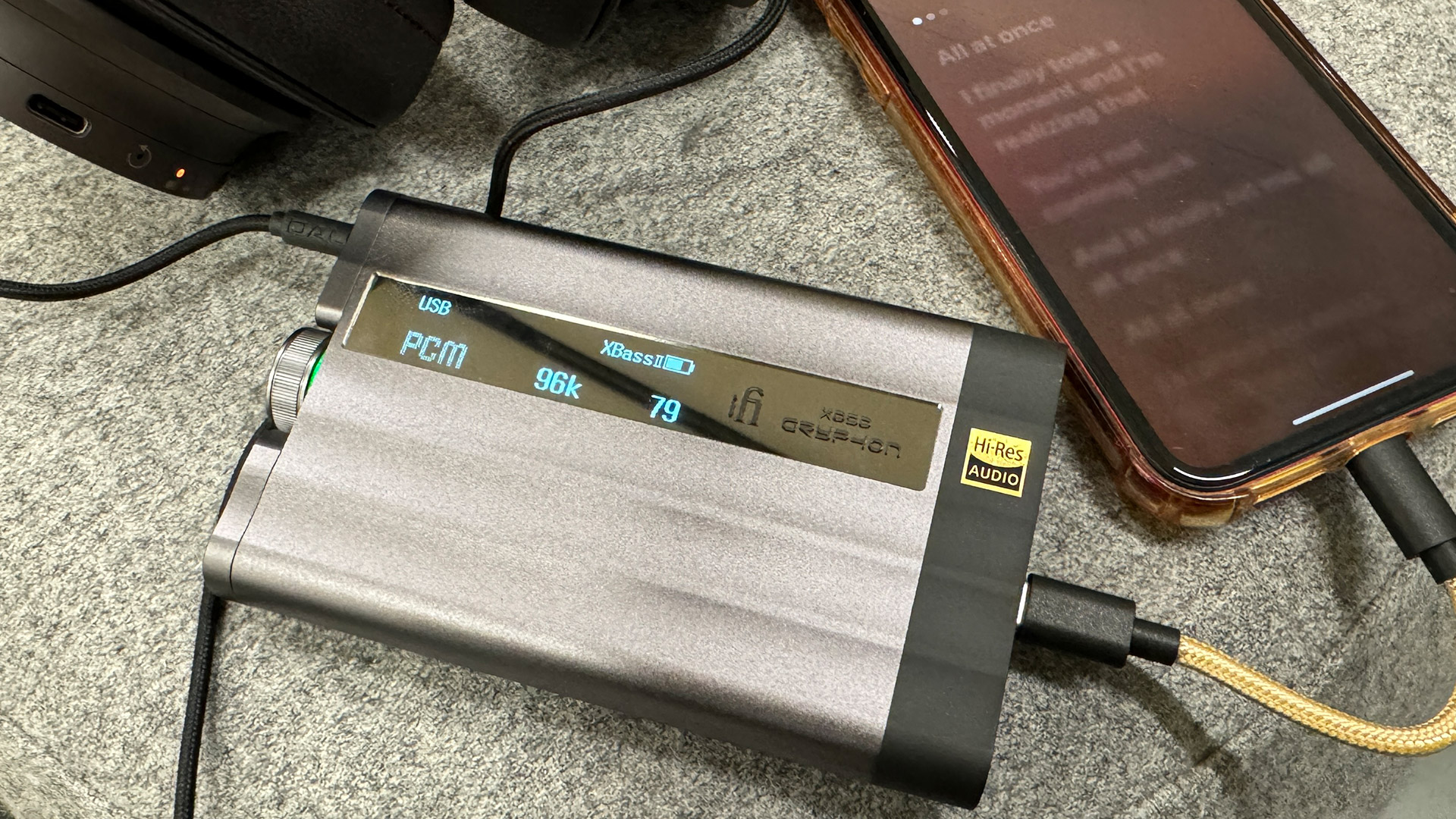
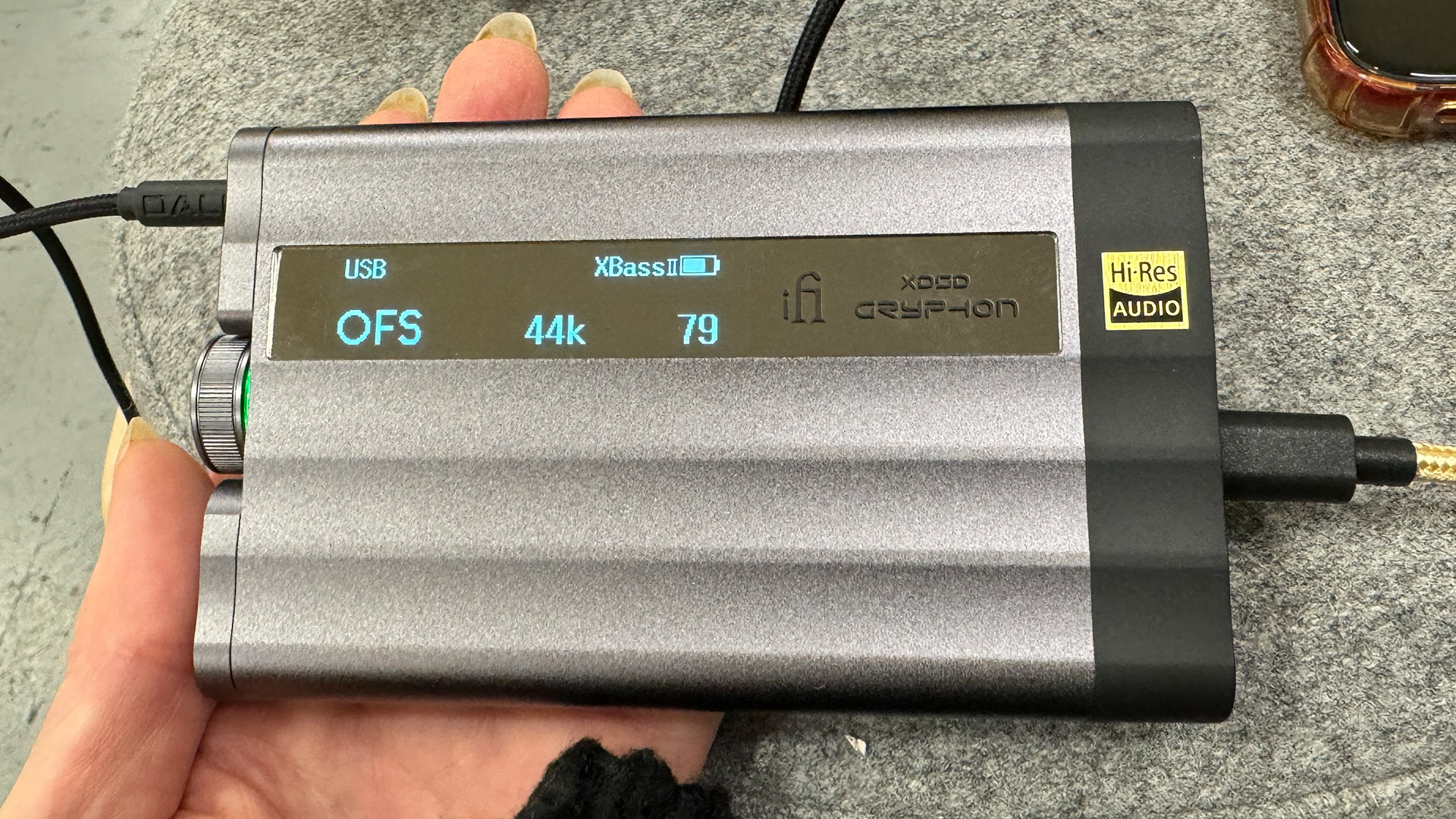
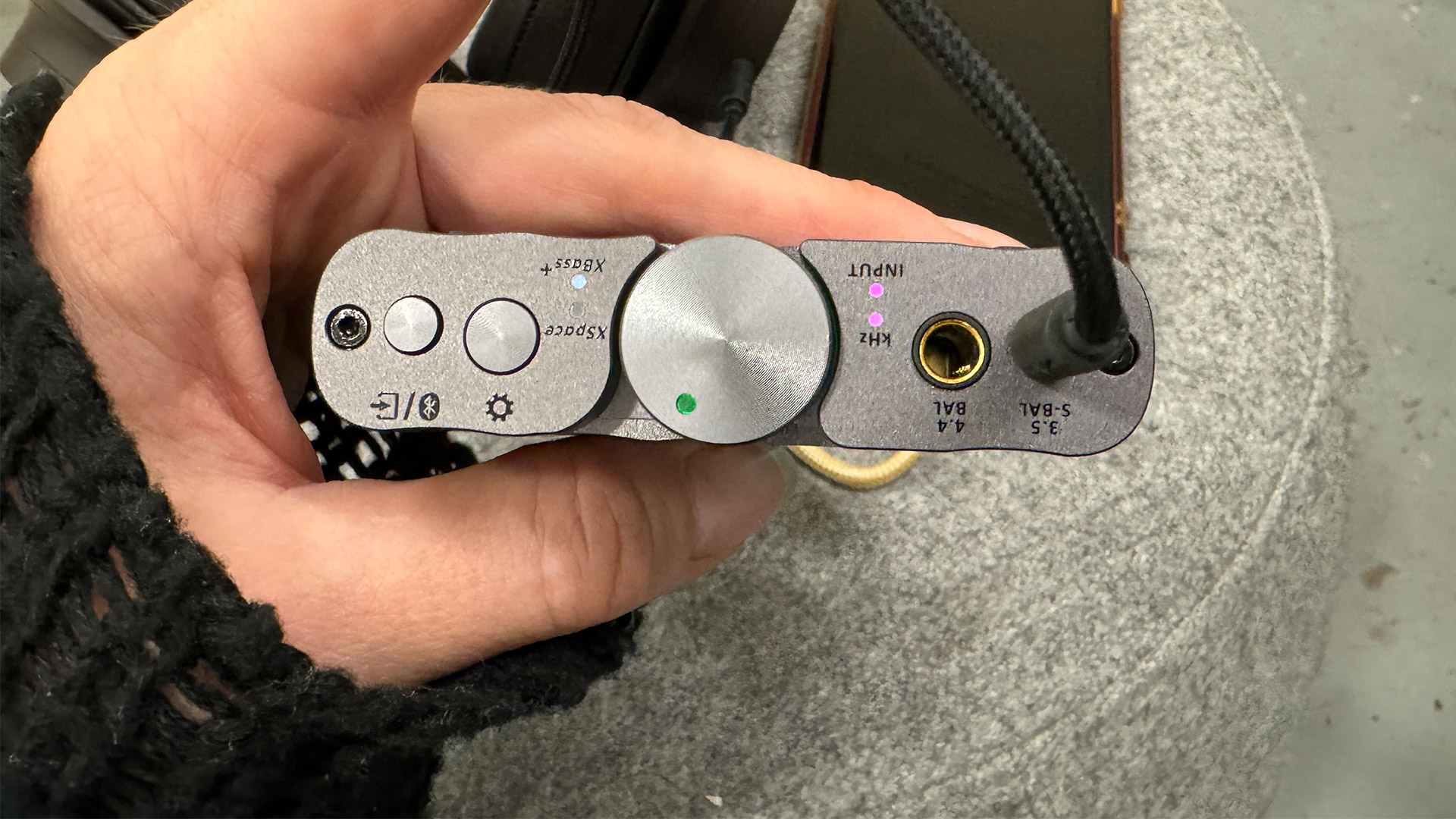
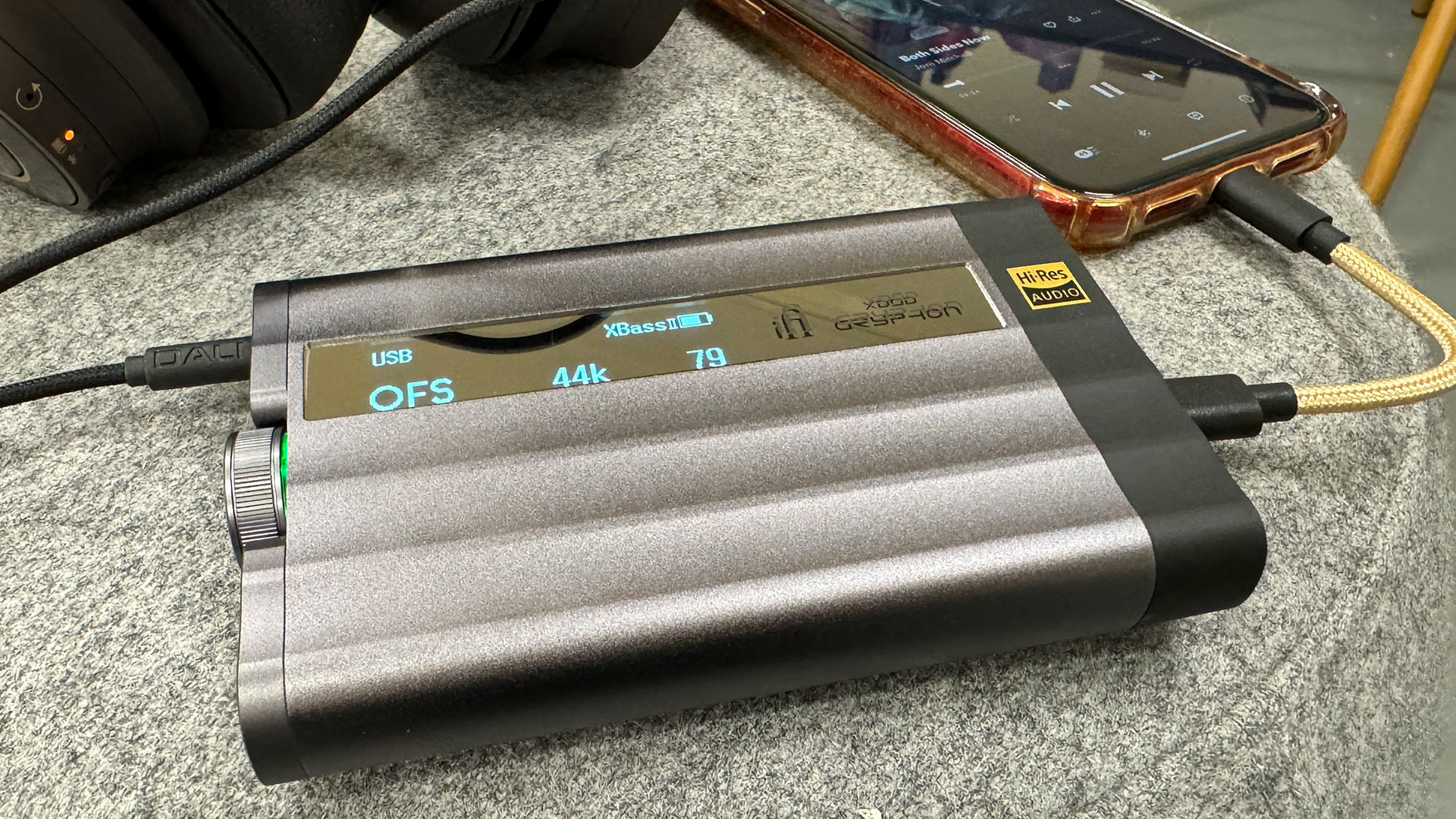
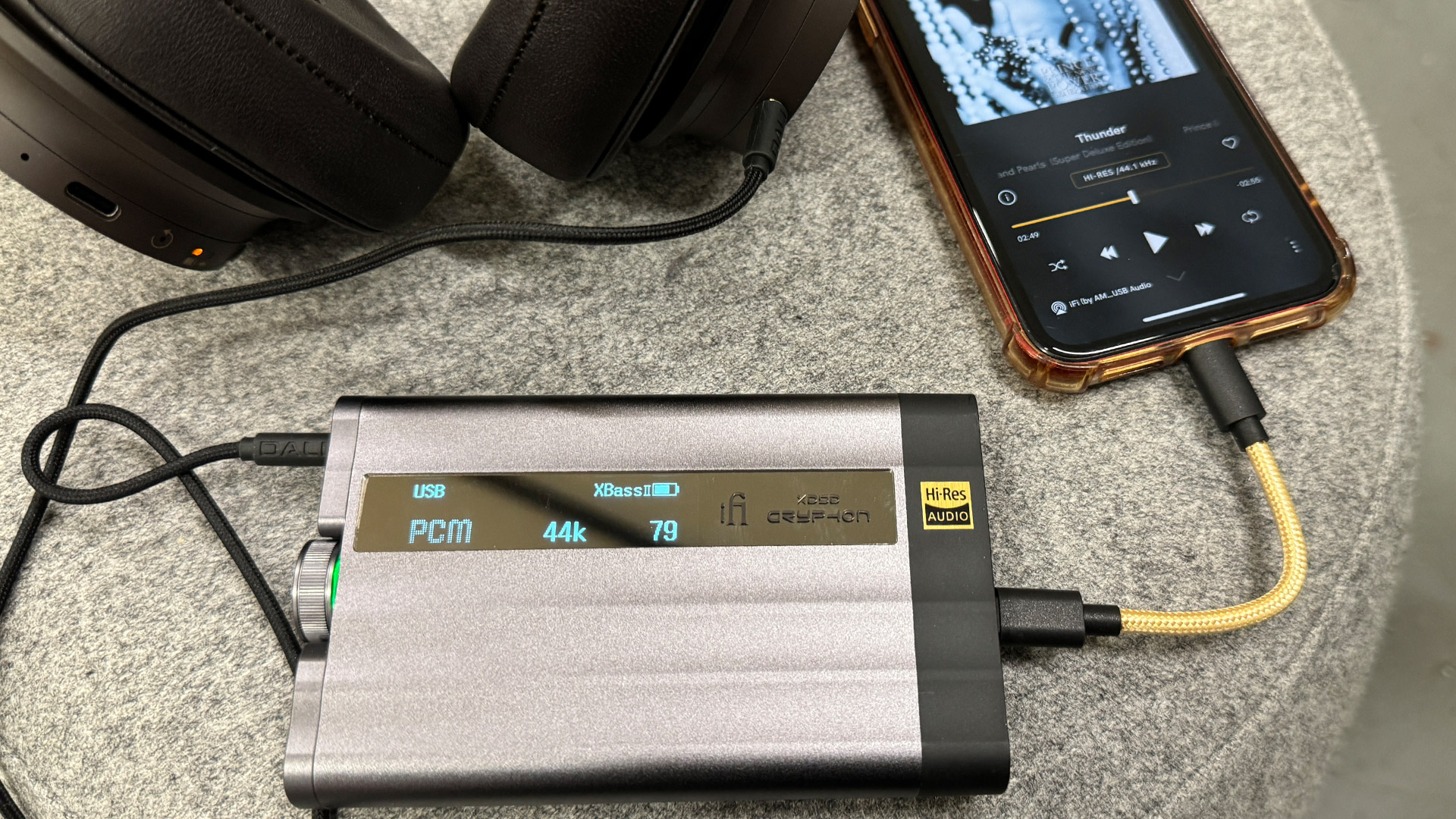
Specifications
Reasons to buy
Reasons to avoid
✅ You listen to lots of audio file types: The xDSD is versatile, with compatibility for virtually any digital audio file you send it.
✅ You want desktop and portable use: Designed to work seamlessly in different setups, and compact enough to be considered portable.
❌ You want high-end: While well-built, the design doesn’t exude a premium aesthetic that matches its price tag.
❌ You don't have the energy for a confusing interface: The controls have color-coded indicators, making it tricky if you don't memorize them.
The iFi xDSD Gryphon widens the operability and relevance of audio company iFi's DAC and headphone amp range by offering wireless, as well as wired, connectivity in a design that's small, light and portable. No, the xDSD Gryphon is not cheap, but the way it performs justifies the price and means it's our top premium portable pick.
The iFi xDSD Gryphon brings you major flexibility in terms of connectivity and digital audio content. It'll happy work with digital files of many types. In fact, we bet there’s no chance it can’t deal with what you give it. From there, it delivers what we described as "a completely confident and convincing sonic attitude" in our review – just make sure you use headphones that are up to the iFi xDSD Gryphon's high standards.
If you're looking for a device that’s more than capable of doing the audio business, regardless of which digital film you're using and whether you want desktop or portable listening, it’s a no-brainer.
Read our full iFi xDSD Gryphon review
The best wireless portable DAC


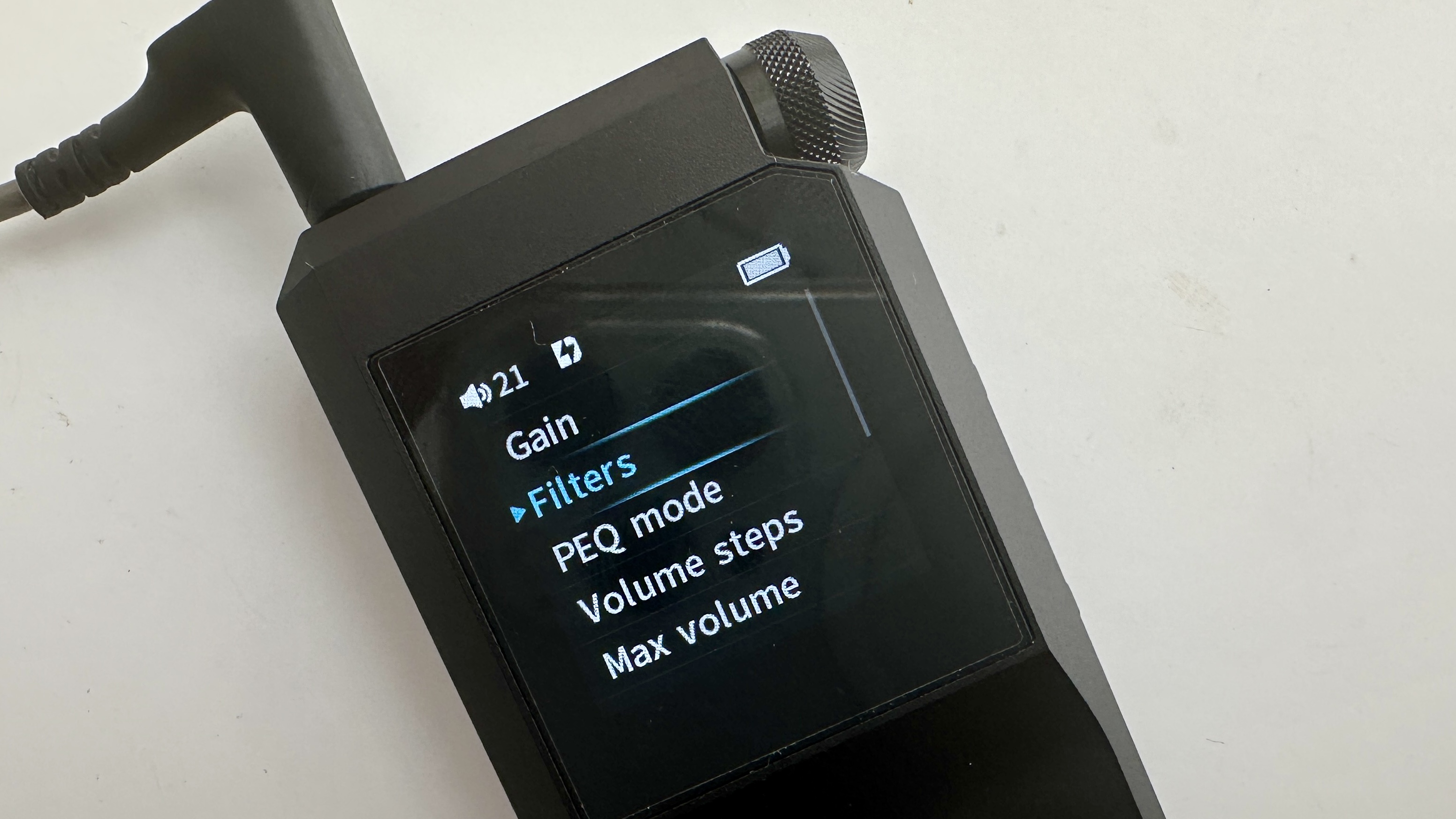
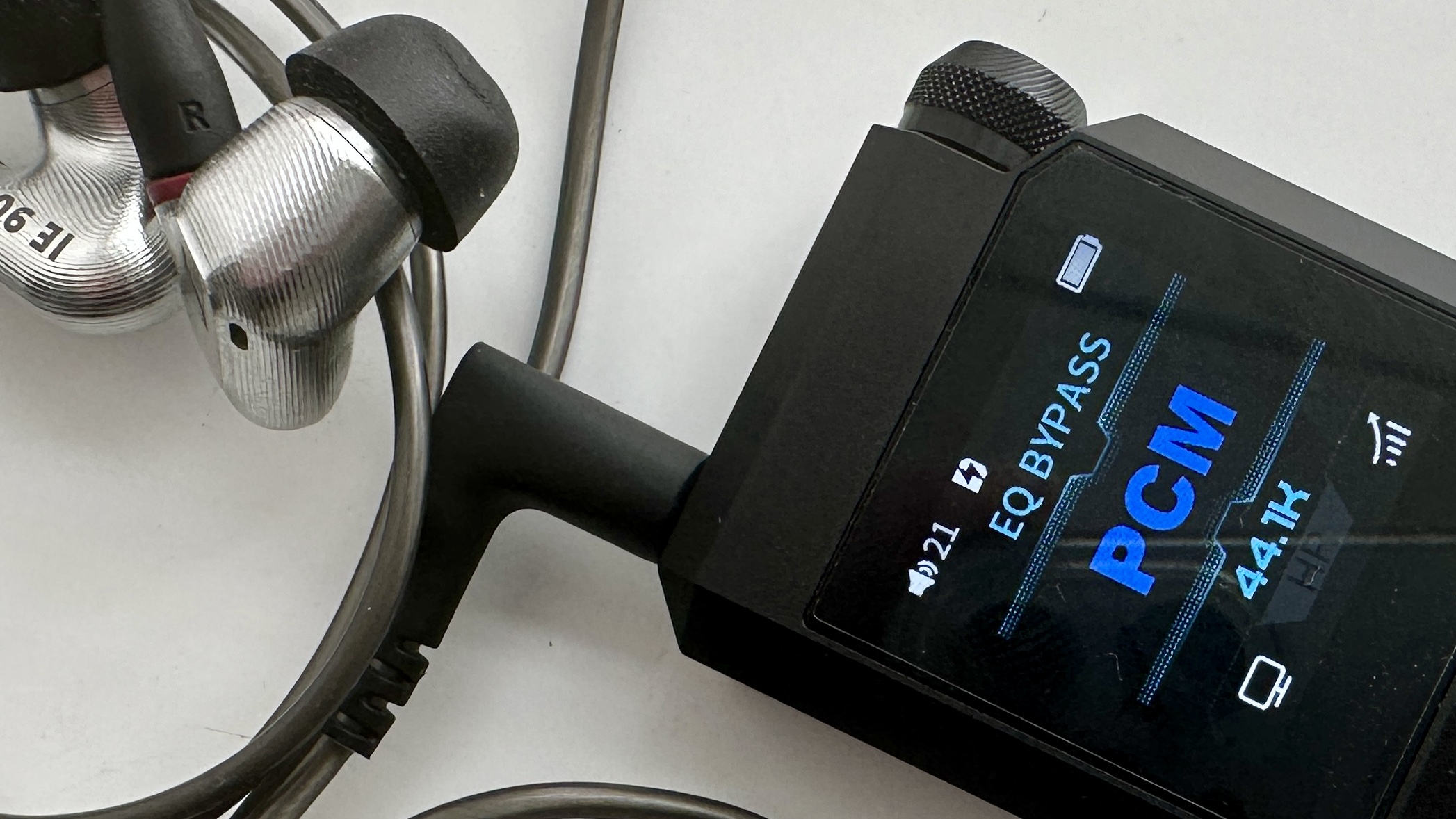
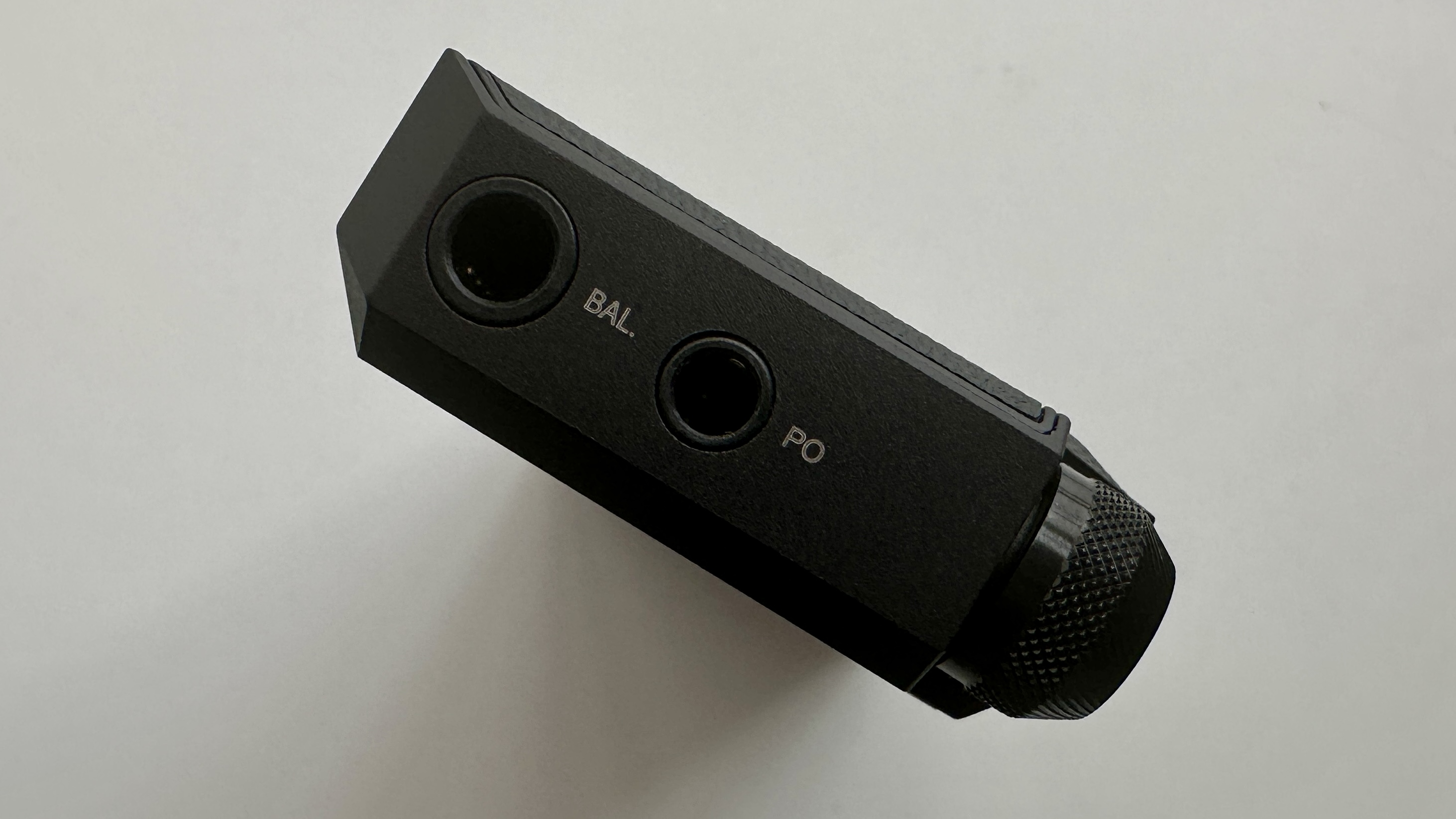
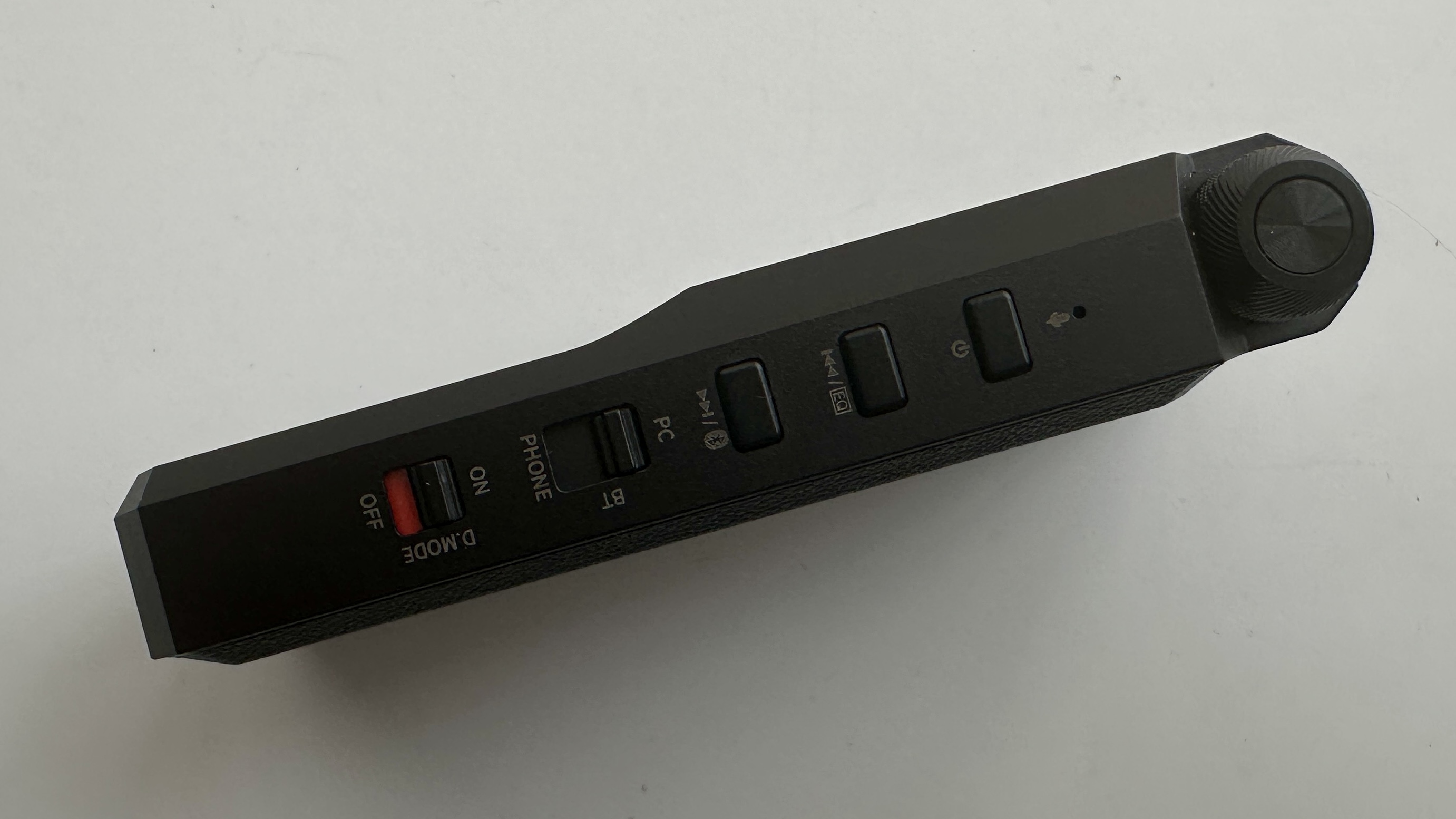
Specifications
Reasons to buy
Reasons to avoid
✅ You like fine-tuned control: Granular doesn't begin to cover it. The app gives you an extraordinary level of control over the BTR17's behavior.
✅ You appreciate a stacked specs sheet: FiiO hasn't held back here. This DAC is brimming with high-end features that you'd expect from devices costing a lot more.
❌ You crave a deep, heavy bass: Look, the BTR17's low-end is tight, articulate and well-defined. But it lacks the sheer weight that some listeners may want.
❌ You struggle with small screens and controls: It's compact by design, which is a good thing, but means you need to read tiny text and fiddle with small buttons.
The FiiO BTR17 might be a tiny DAC, but trust us – it’s packed with functionality that feels far beyond its dinky physical confines.
You can get your digital audio on board via either USB-C or Bluetooth 5.4 with top-tier codec compatibility including LDAC and aptX Lossless, which is why it’s our top wireless pick. Sure, Bluetooth has its limitations when it comes to true hi-res playback, but if you want to use your wired IEMs wirelessly (at least, only wired to the DAC itself, not your source device), this is one of the best ways to do it.
Inside are a pair of ESS ES9069Q DACs that are capable of handling files up to 32-bit/768kHz and DSD512 resolution, plus the option of balanced or unbalanced headphone outputs. The battery life is solid, and when used as a desktop amp, it delivers a surprisingly powerful 650mW + 650mW output.
The BTR17’s detailed, agile sound has plenty of clarity and drive, though the bass may not satisfy those craving serious low-end power. And it is worth mentioning that while its small size is great for portability, it does make the screen and controls a bit fiddly.
Considering there are pricier rivals that aren’t this well specified, the FiiO BTR17 offers outstanding value for money. If you’re curious about another wireless route, do check out the iFi Go Pods, which give your wired IEMs a high-quality Bluetooth upgrade direct to the earpieces and without a standalone DAC.
Read our full FiiO BTR17 review
The best mid-range desktop portable DAC
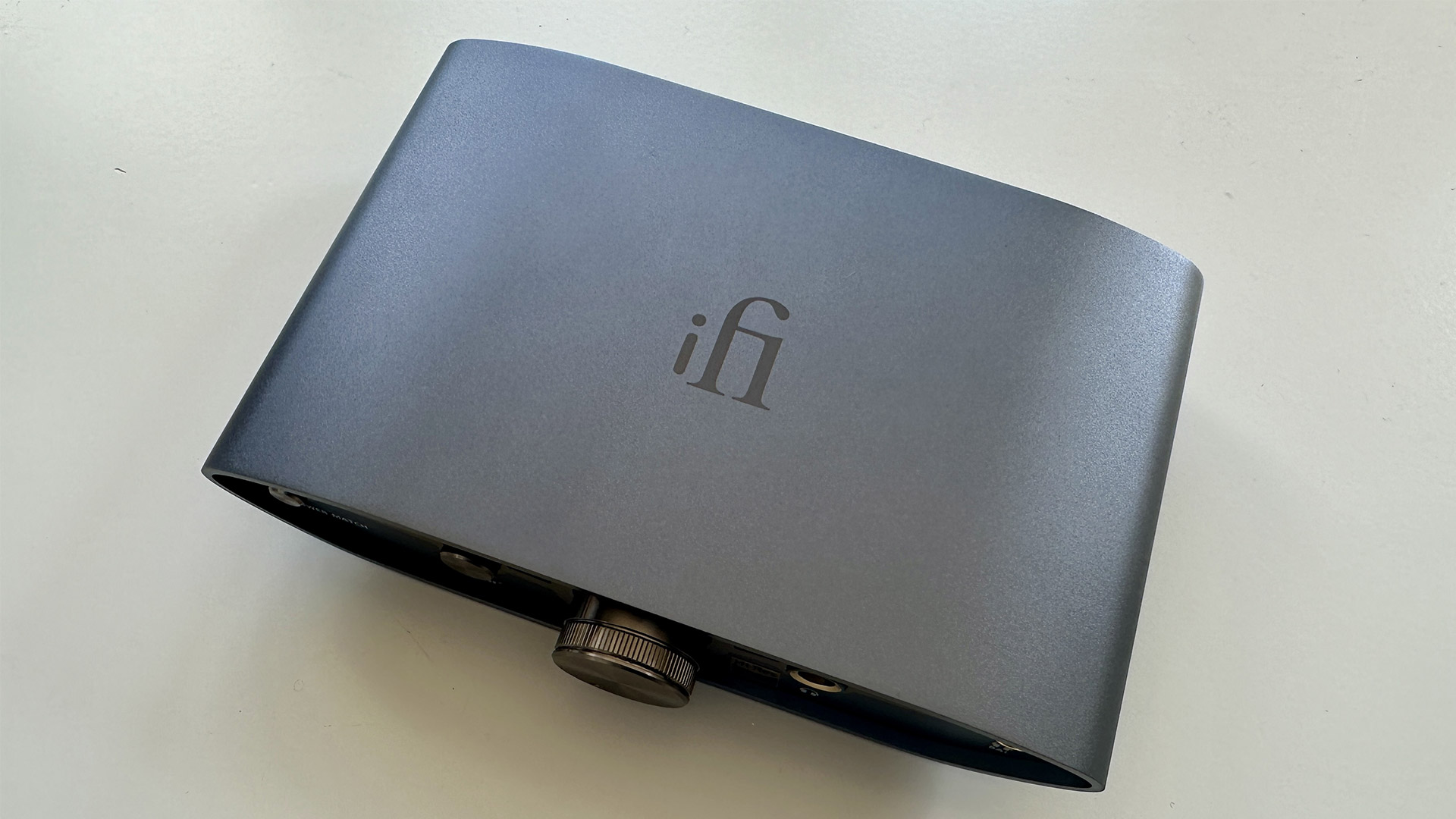
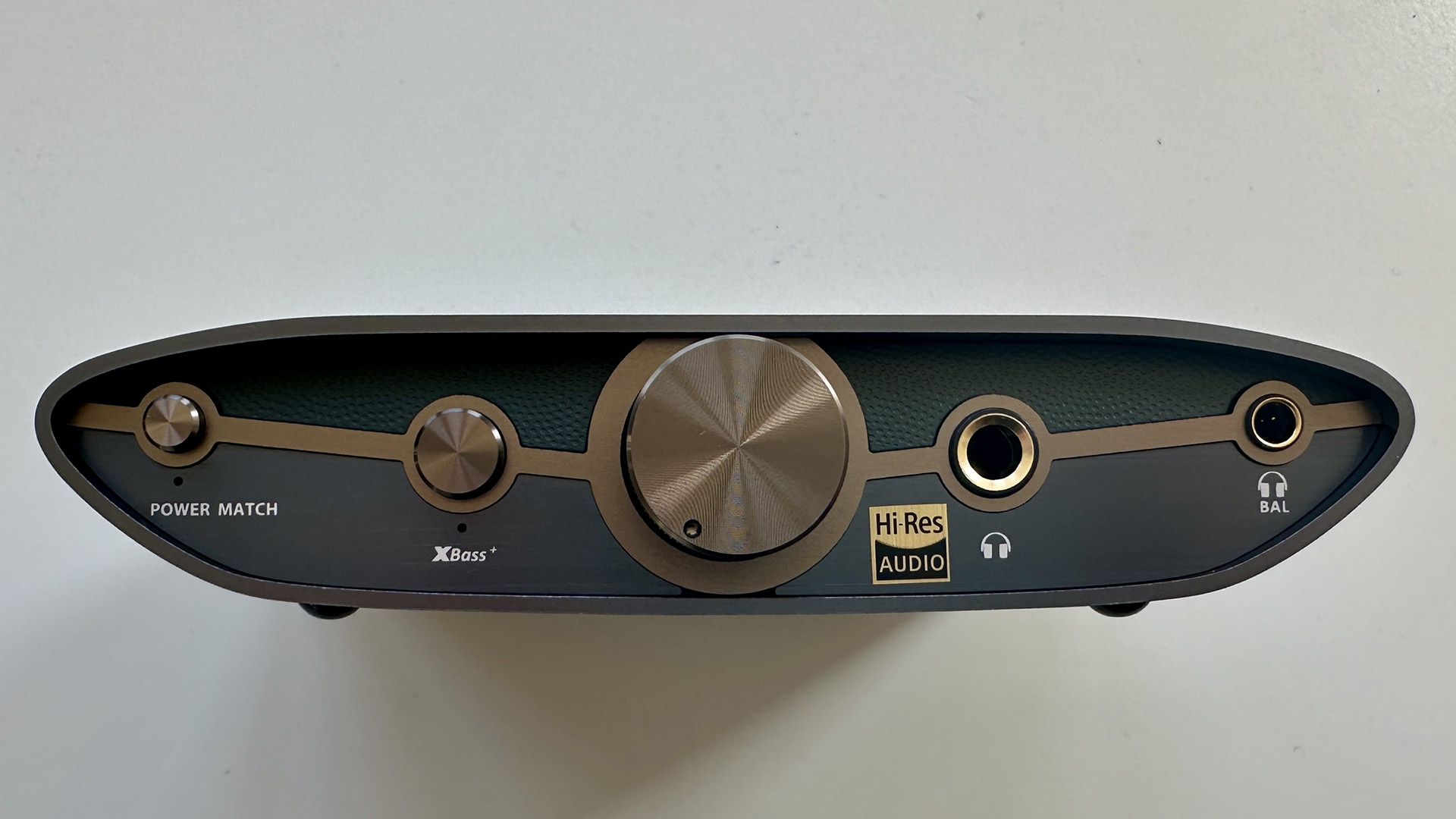
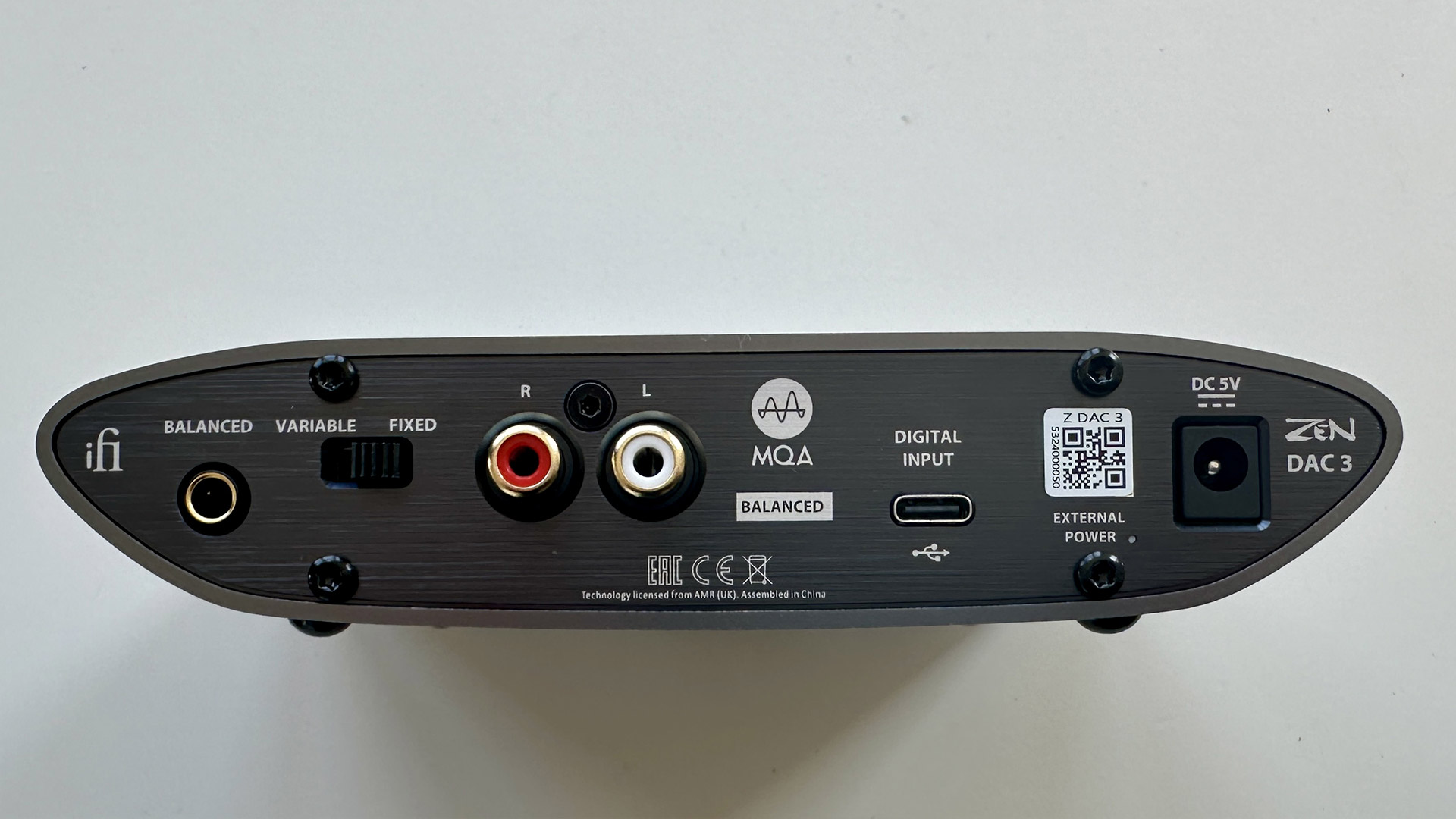

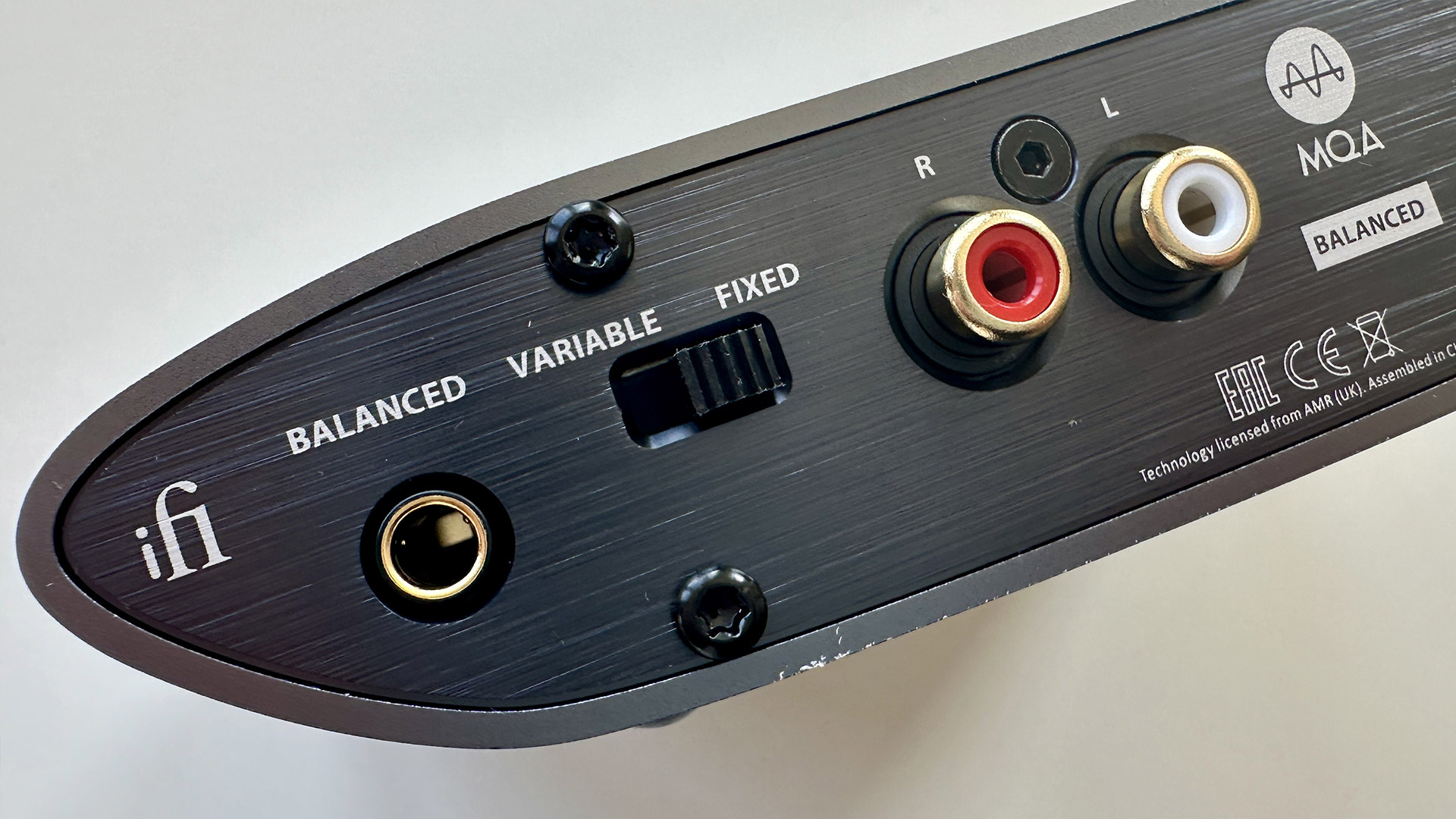
Specifications
Reasons to buy
Reasons to avoid
✅ You want a high-end desktop audio experience: With the iFi Zen DAC 3 your laptop sounds like a high-end source of music.
✅ You care about looks: Not the best-looking or most premium pick here, but its built to a high standard.
❌ You don't have great headphones: To fully appreciate its capabilities, you’ll need headphones that can deliver on its potential.
❌ You listen to lower resolution audio: Yes, it can handle Spotify. But it can’t work miracles with sub-CD-quality files.
Our best mid-range desktop portable DAC pick is the iFi Zen DAC 3, effectively turning your laptop or phone into a hi-fi system. It's incredibly easy to set-up with a simple USB-C input for both power and data, with multiple power options to pick from. It also boasts the ability to function as a decoder, too.
Assuming you're using a good pair of headphones and high-quality digital audio files, the iFi Zen DAC 3 makes music sound excellent. In our review, we wrote that it delivers a "musical, informative and entertaining listen". We particularly rated this DAC for its punchy sound and tonal balance. But we were also incredibly impressed by the soundstage, writing in our review that the soundstage is "open, properly defined and allows every element of the recording the space it needs in which to express itself."
With a metal exterior crafted into a vaguely trapezoid shape that looks like a beautiful hip flask, this DAC definitely looks like it belongs to the iFi family. Although some minor design changes have been made, including a recessed fascia that serves as the bulk of the chassis. It's not the most portable device on the list, but it's not so bulky that it won't fit nicely on your desk.
Read our full iFi Zen DAC 3 review
The best premium desktop portable DAC
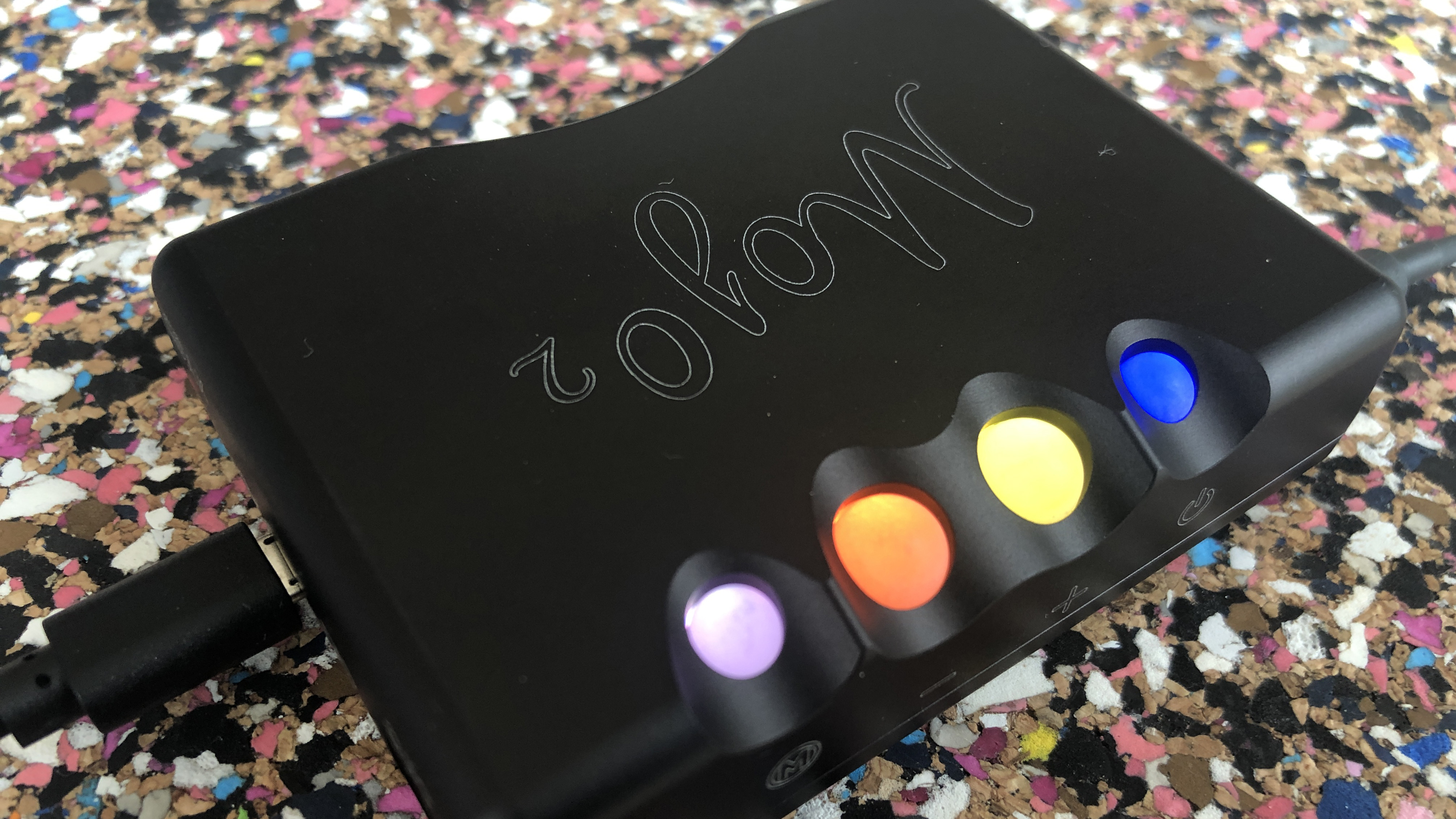
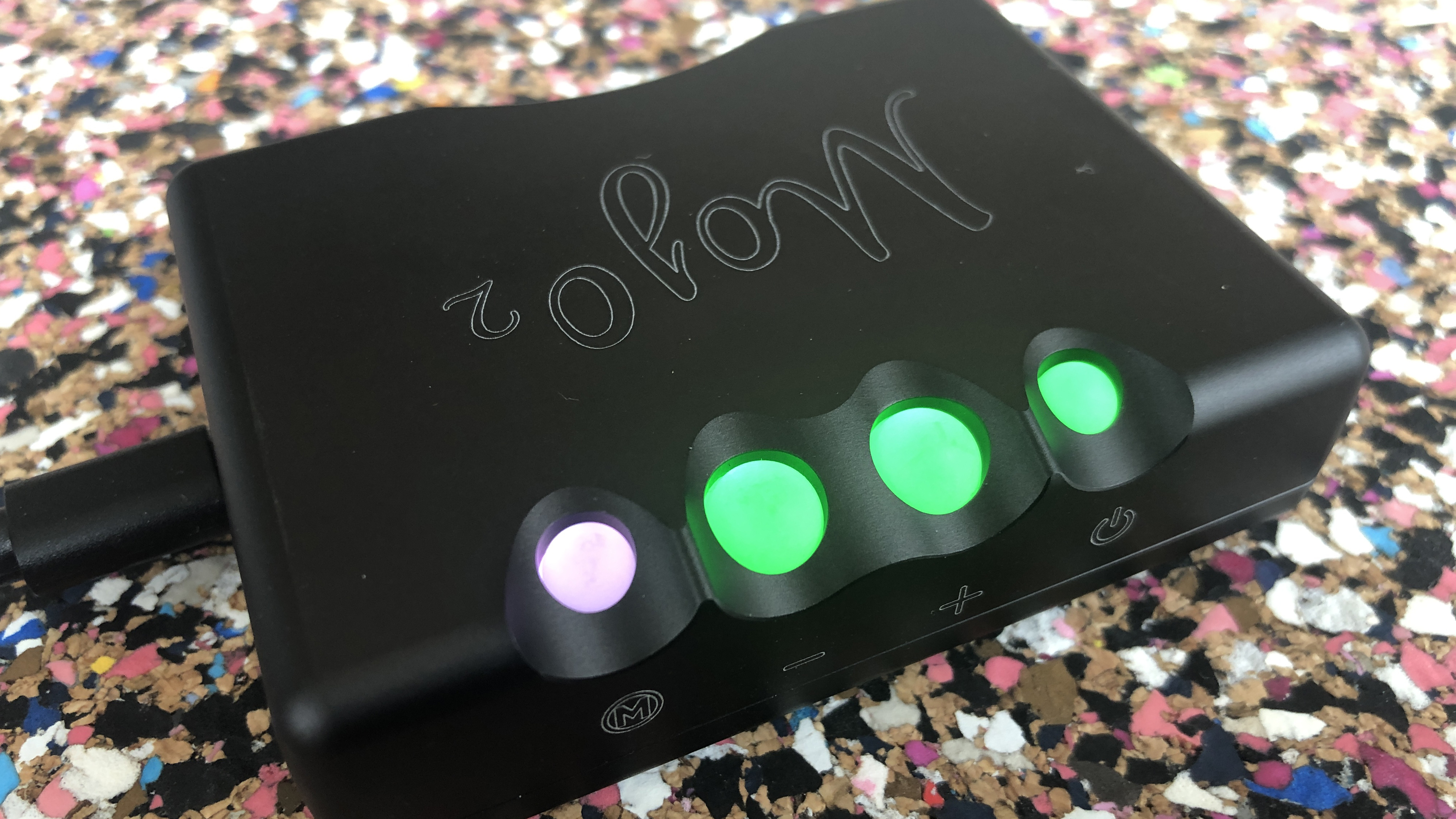

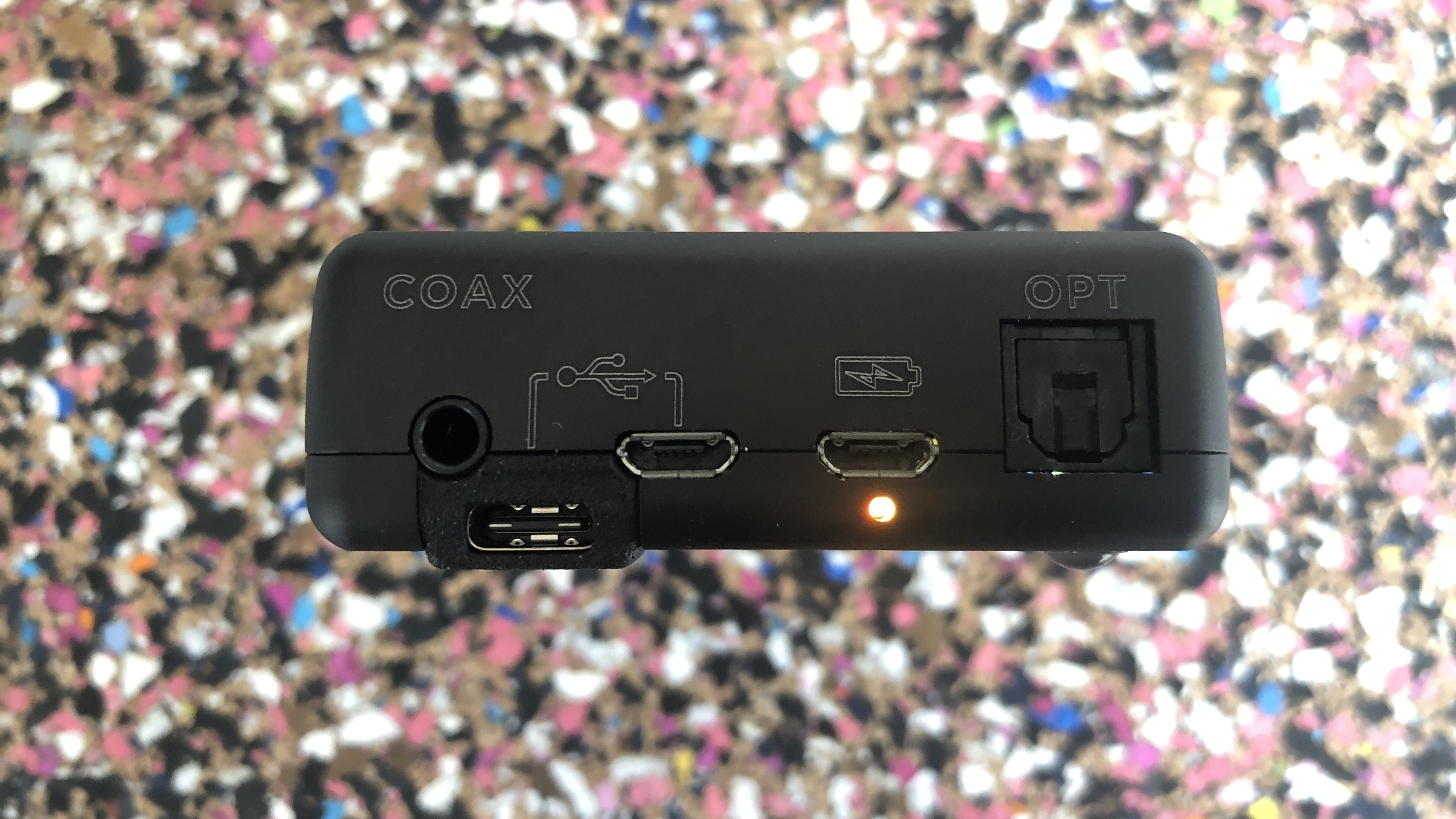
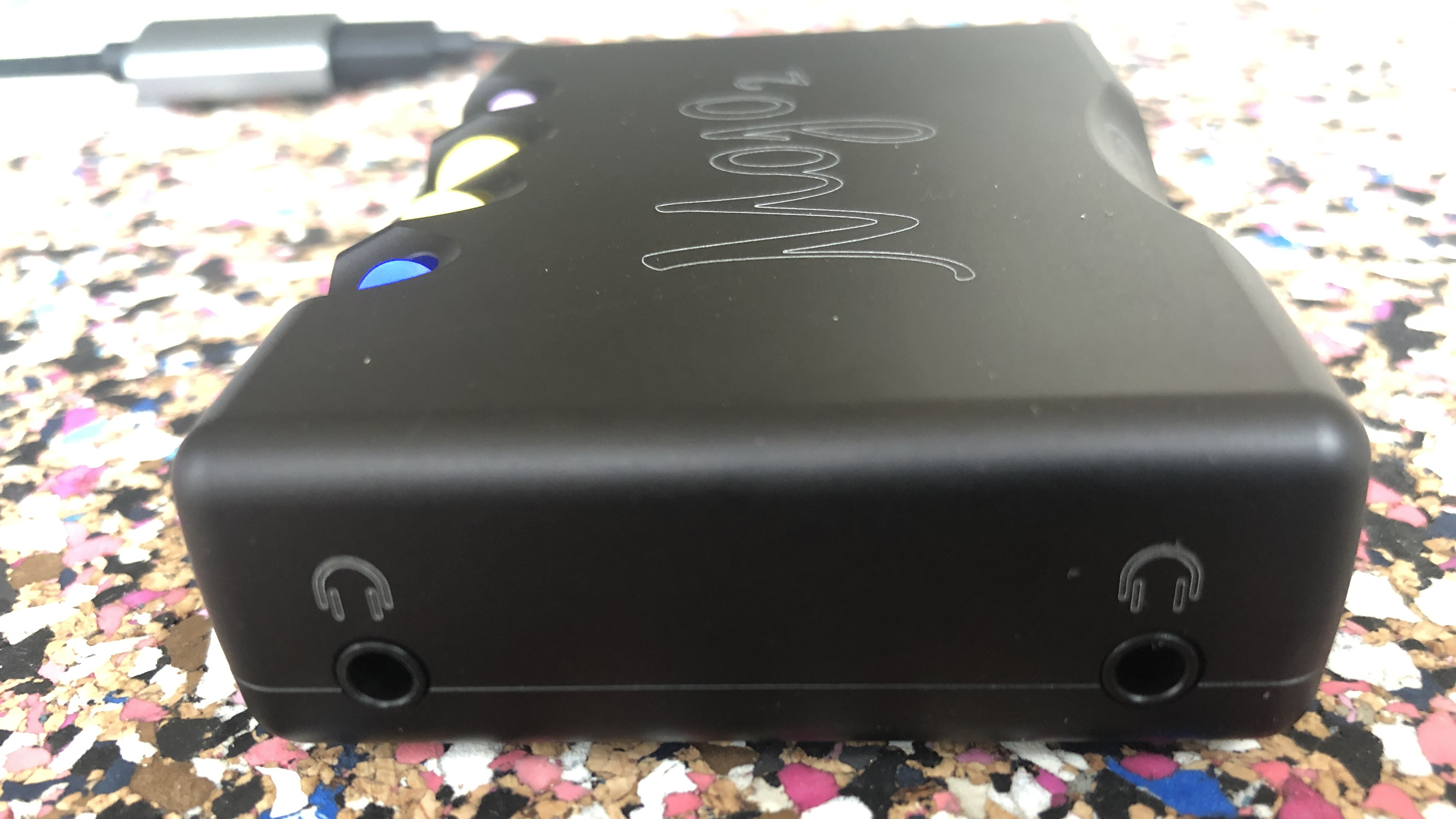
Specifications
Reasons to buy
Reasons to avoid
✅ You want to elevate desktop audio: The improvement Mojo 2 brings to your laptop’s sound is truly impressive.
✅ You want support for dual headphone use: It's capable of powering two pairs of headphones simultaneously, perfect for sharing.
❌ You're colorblind: The interface relies heavily on distinguishing between subtle color variations.
❌ You only want to listen on-the-move: While compact and lightweight, it’s not the most portable option available.
The original Chord Mojo DAC was at the top of our best portable DAC list for a long time, but it's been replaced by the Chord Mojo DAC 2, which is our top premium pick for desktop listening. Replacing a product that’s borderline iconic can’t be easy - which is maybe why it’s taken Chord Electronics seven years to replace its original Mojo DAC / headphone amp.
The Chord Mojo DAC 2 is very easy to use. All you need to do is hook a digital source into one end of the device, and some wired headphones into the other.
During testing, we found this to be a brilliantly accomplished device, able to deliver all the musicality, all the detail, all the refinement and all the excitement hidden in what previously sounded like quite humdrum digital audio files. In pure performance terms, the Chord Mojo 2 almost constitutes a bargain.
But there are several drawbacks, too. The Mojo 2 is bulky (the same size and weight as the original it's replacing) and it doesn't have wireless connectivity. What's more, its control interface can be confusing. Given its size, we'd recommend it as a desktop option and given its high price tag, it's our premium pick.
Read our full Chord Mojo 2 review
The best portable DAC for design
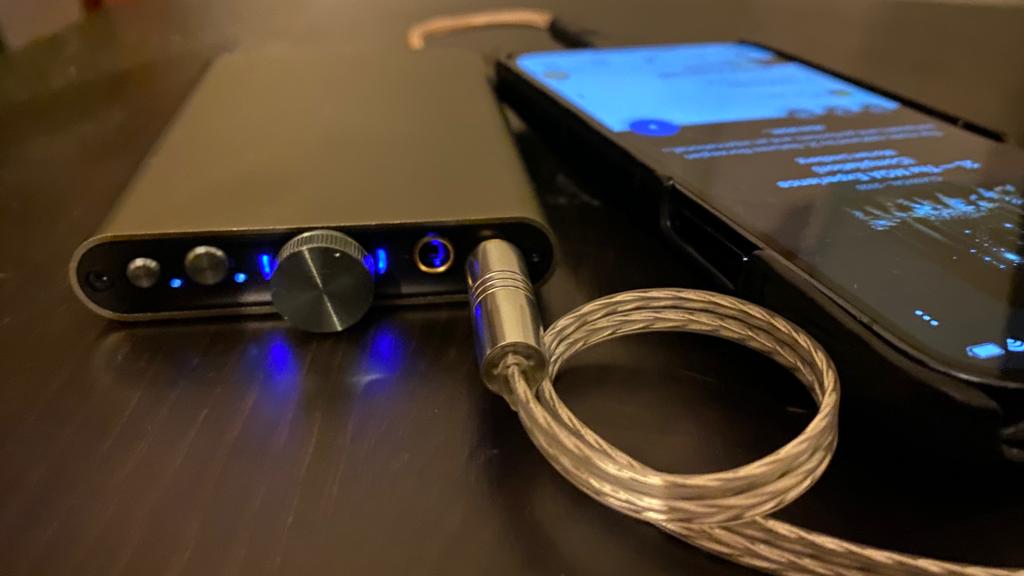
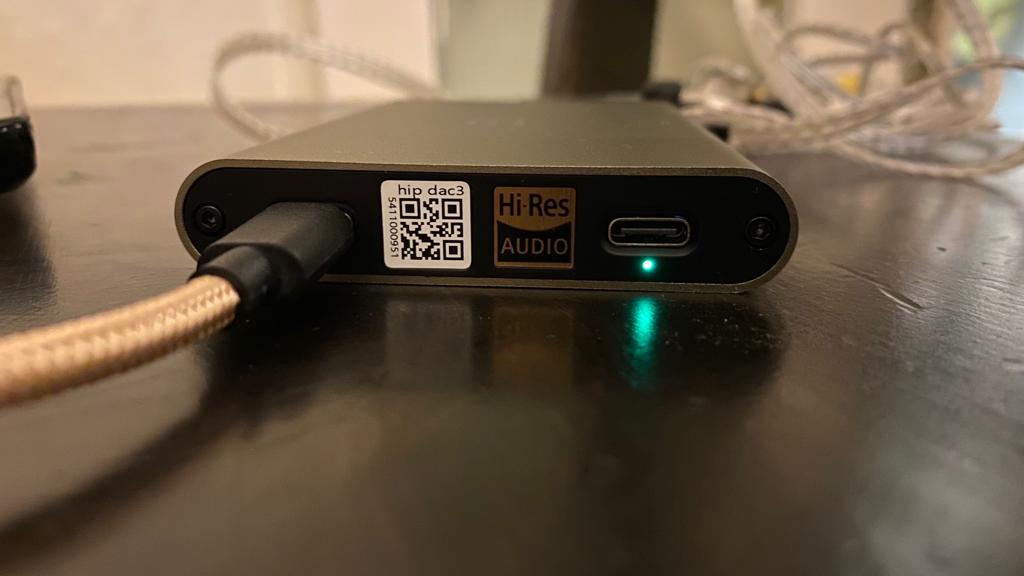

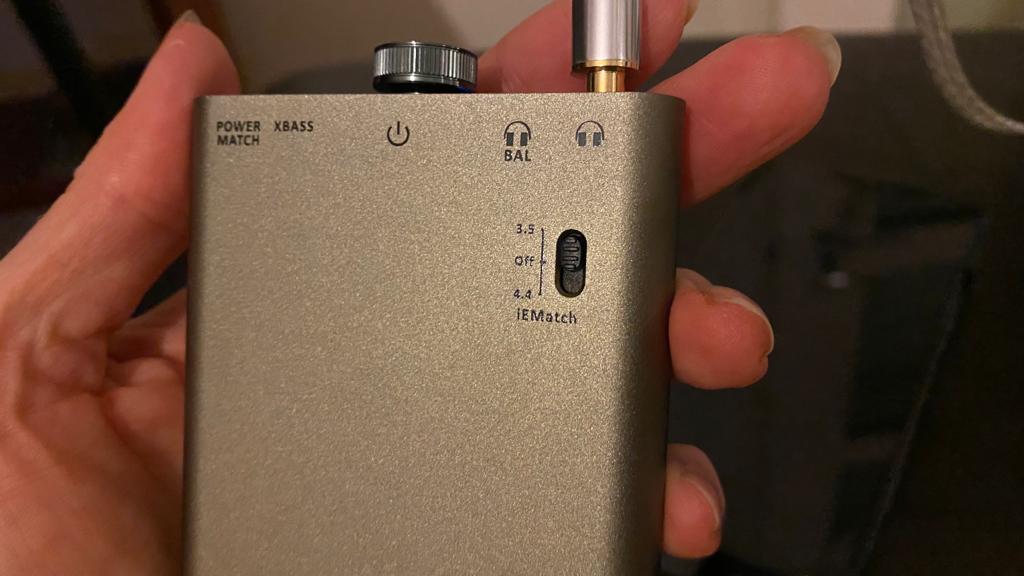

Specifications
Reasons to buy
Reasons to avoid
✅ You value style and substance: The iFi hip-dac 3 blends a trendy aesthetic with top-notch audio quality.
✅ You only listen to premium music streaming services: This DAC player handles high-res audio with ease.
❌ You don't have a USB-C device: You’ll need an adapter if your smartphone lacks a USB-C port.
❌ You only listen to Spotify or free streaming tiers: Its full potential won’t shine if you’re using lower-quality audio sources.
If want want a DAC that doesn't just sound good, but looks great too, then meet iFi's hip flask-esque hip-dac 3.
It may look a little dull in the static photos from our review, but it comes in a shade called 'Titanium Shadow', because it was purported to "change tone in different lights, with hints of bronze and vintage gold." And, in real-life, it looks just as special as that description sounds. We think it'll pair fantastically well next to your shiny new iPhone.
Looks aside, how does it sound? Fantastic. In our iFi hip-dac 3 review we wrote: "once you've heard it, you'll struggle to go back to listening without it for detail, neutrality and clarity." We were right, this is one extremely enjoyable listen, delivering a classy and refined audio experience.
Read our full iFi hip-dac 3 review
The best portable DAC if money is no object
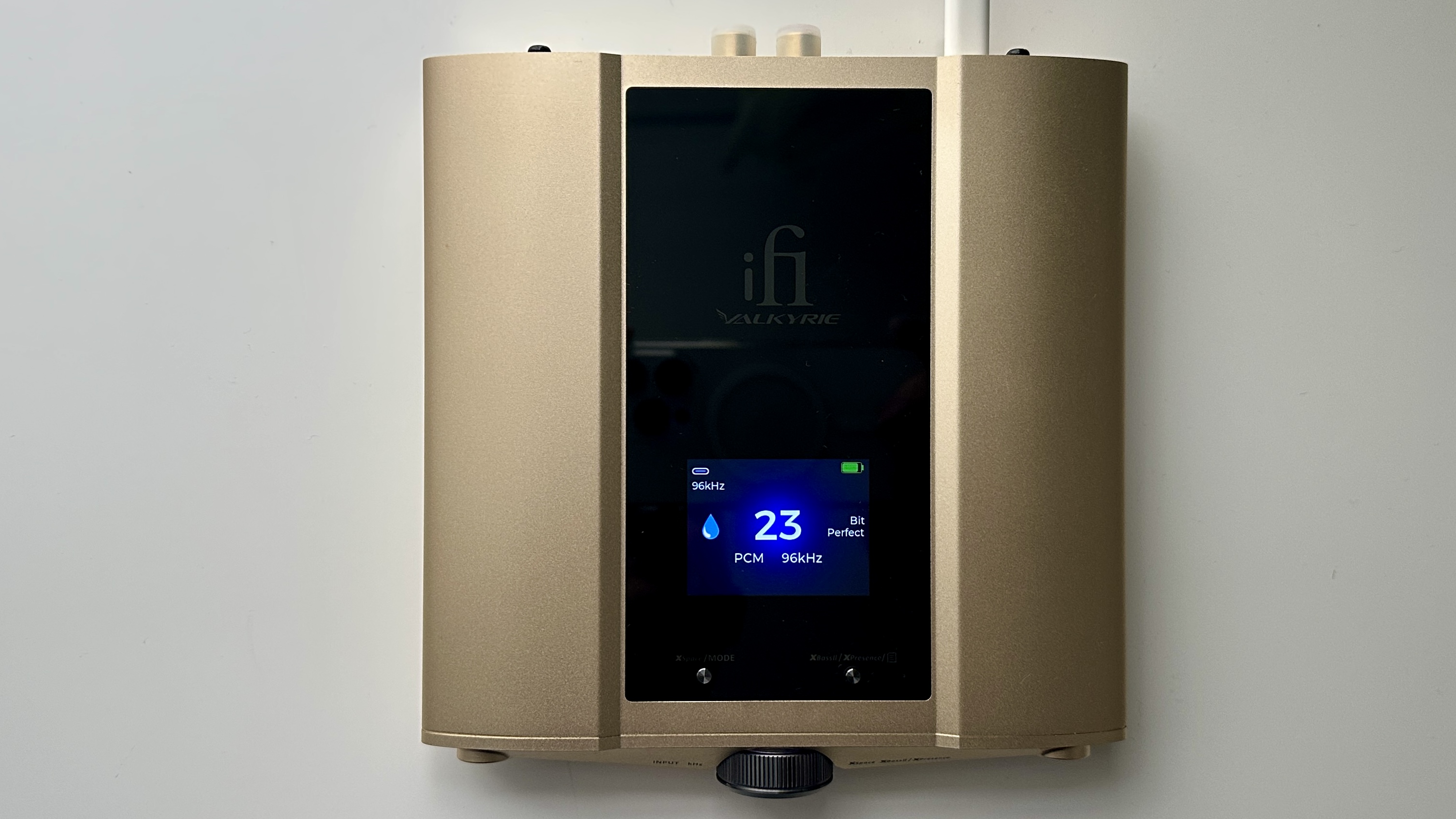
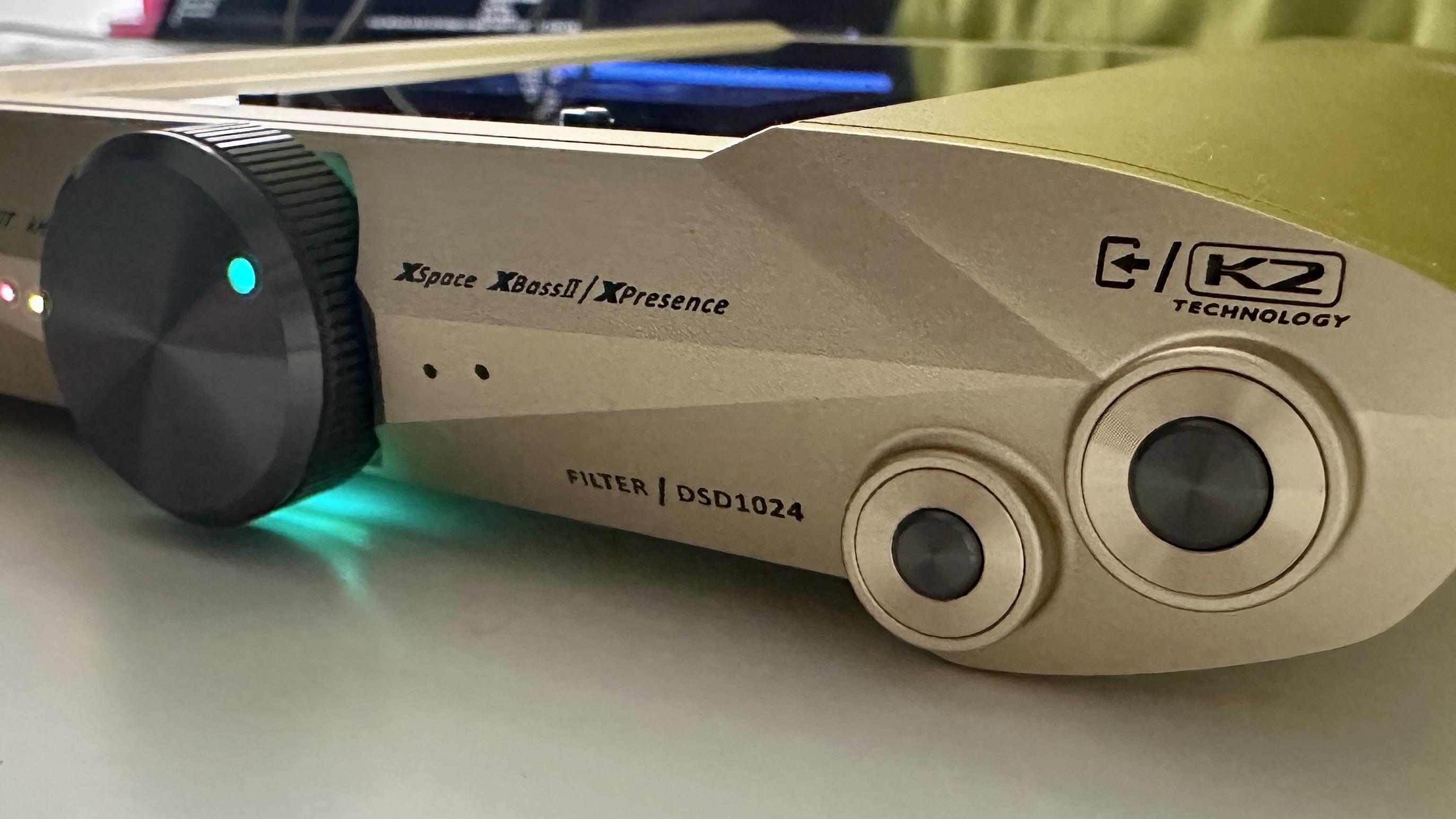
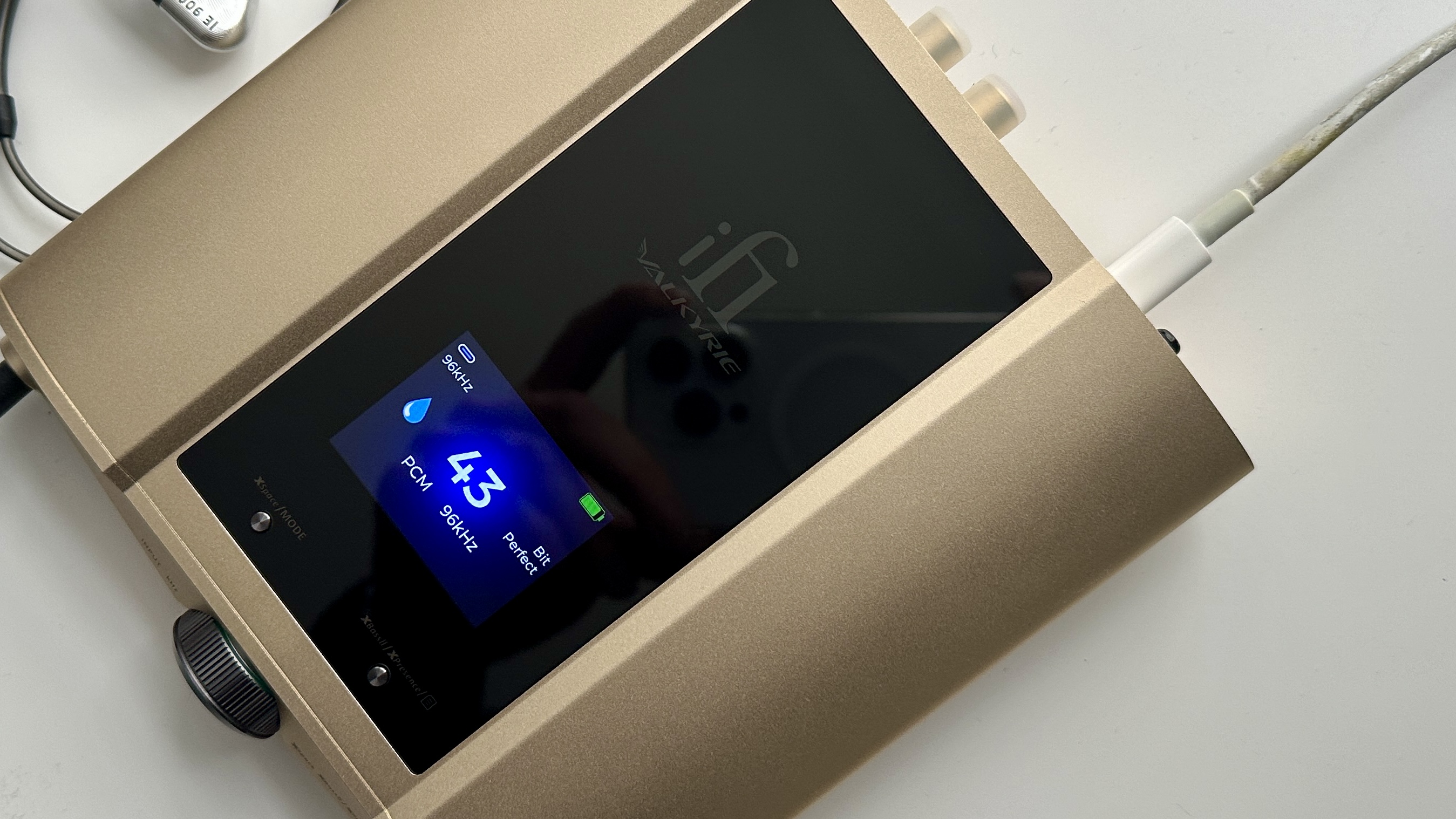
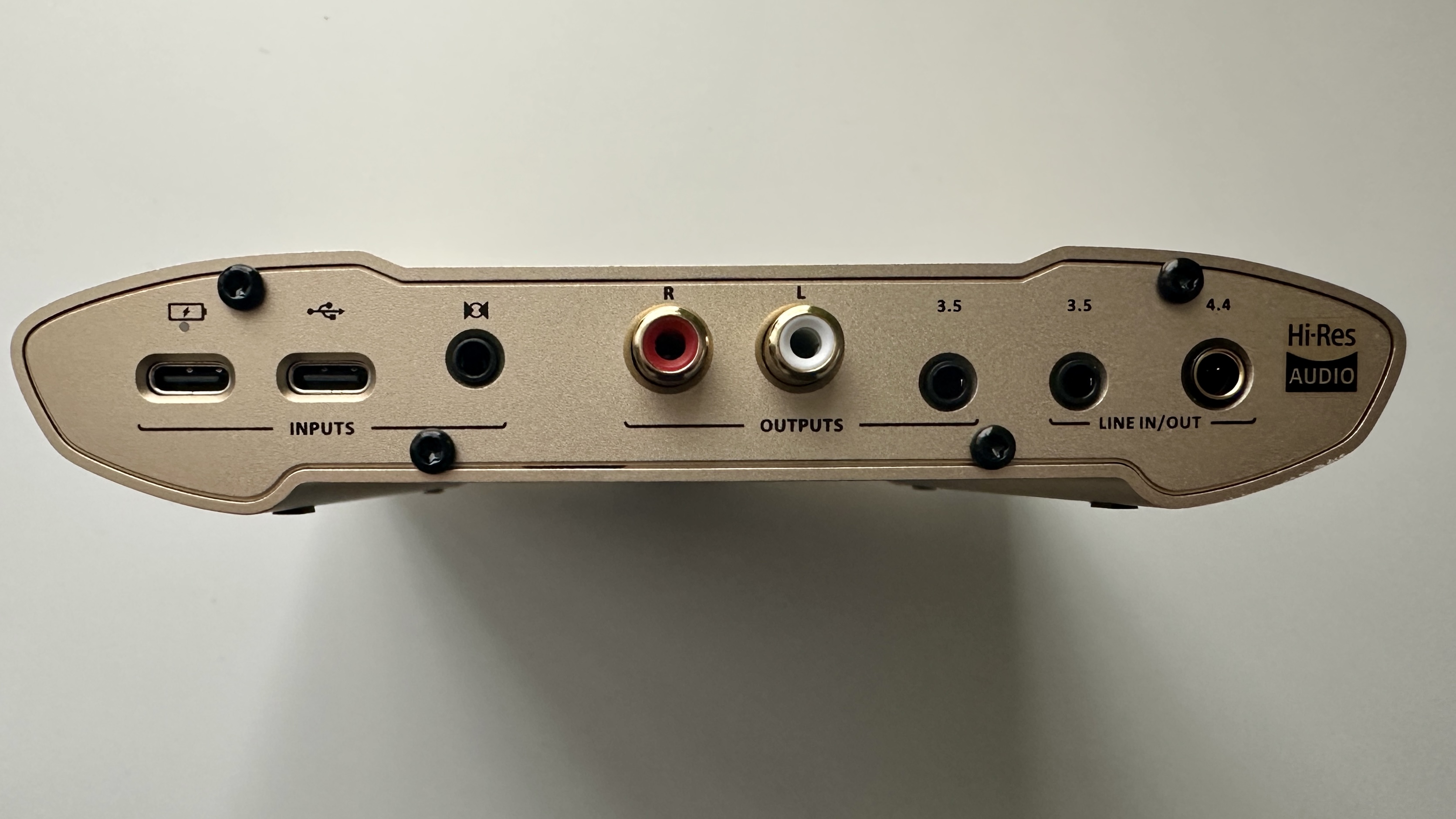
Specifications
Reasons to buy
Reasons to avoid
✅ You want an uncompromising DAC: Few rivals come close to the Valkyrie’s mix of flexibility, precision and sheer sonic performance.
✅ You appreciate bold design: Does it need to look like this? Absolutely not. But iFi’s decision to make a DAC this dramatic and distinctive deserves credit.
❌ You want plug-and-play simplicity: This isn’t a device you can pick up and use straight away. Expect to spend time exploring settings first.
❌ You’re short on desk space: It’s big, bold and will absolutely dominate a smaller setup.
The iFi iDSD Valkyrie isn’t cheap, or particularly portable either, but it’s a knockout desktop (or as iFI calls it, “transportable”) DAC/amp that delivers a staggeringly complete, musical sound.
In testing, what stood out most was its detail and agility. Vocals are lifelike, staging is spacious and bass is dynamic. With quad Burr-Brown PCM1793 DACs, an FPGA for extensive filtering and upscaling (including DSD512/1024), and Bluetooth 5.4 with aptX Lossless, the Valkyrie gives you huge scope to shape the performance you get. And 18 hours of battery life from four batteries keeps it going for long listening sessions.
However, there are caveats. With so many modes, it’s easy to over-process the sound if you push things too far. What’s more, the multi-function buttons and labels make ergonomics fussy. It’s also far larger than most “portable” rivals.
If you can stomach the price and want fantastic performance with serious tweakability, the Valkyrie is controlled, insightful and engaging.
Read our full iFi iDSD Valkyrie DAC review
The best step-up portable USB-C DAC

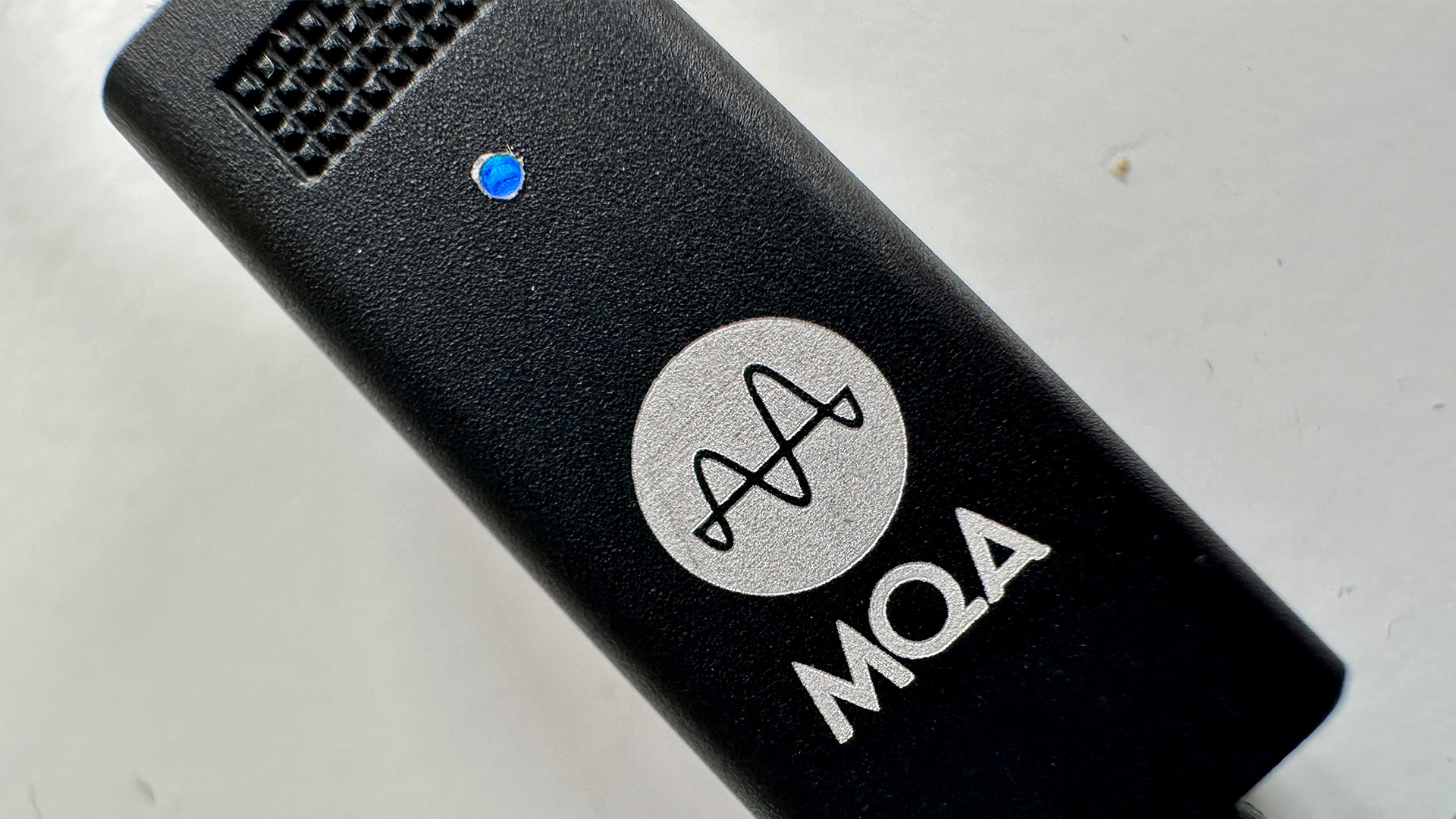
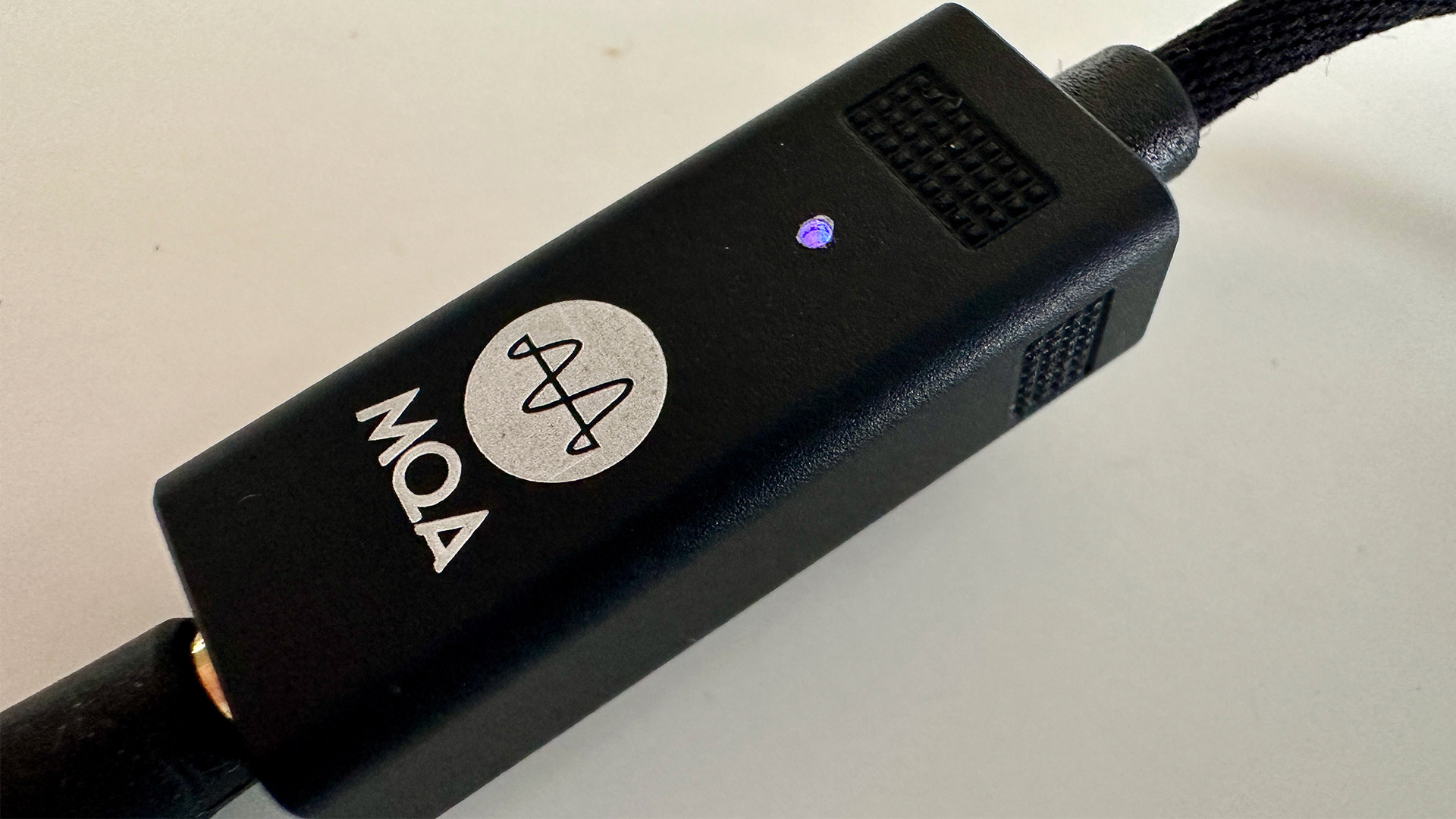
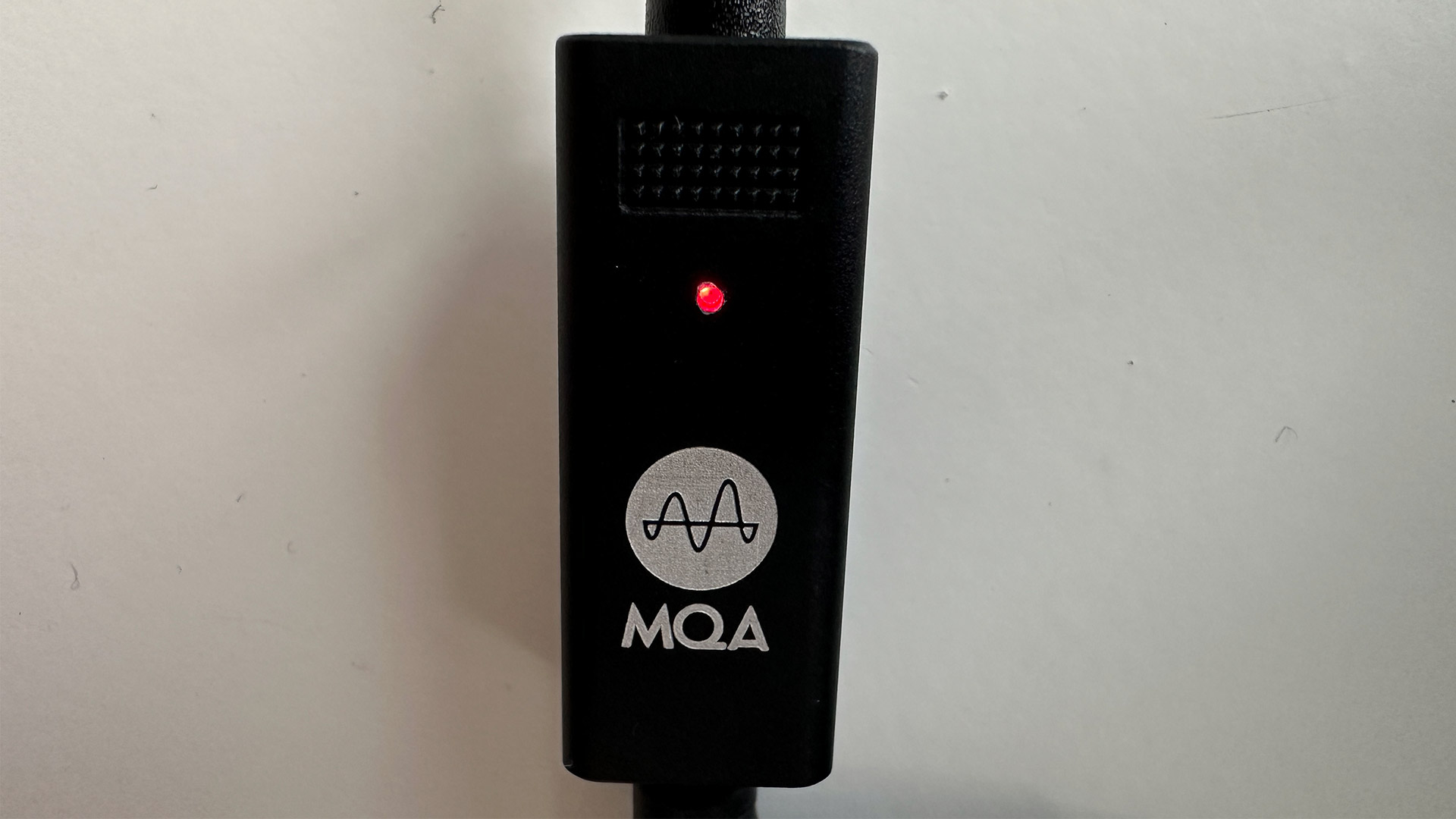
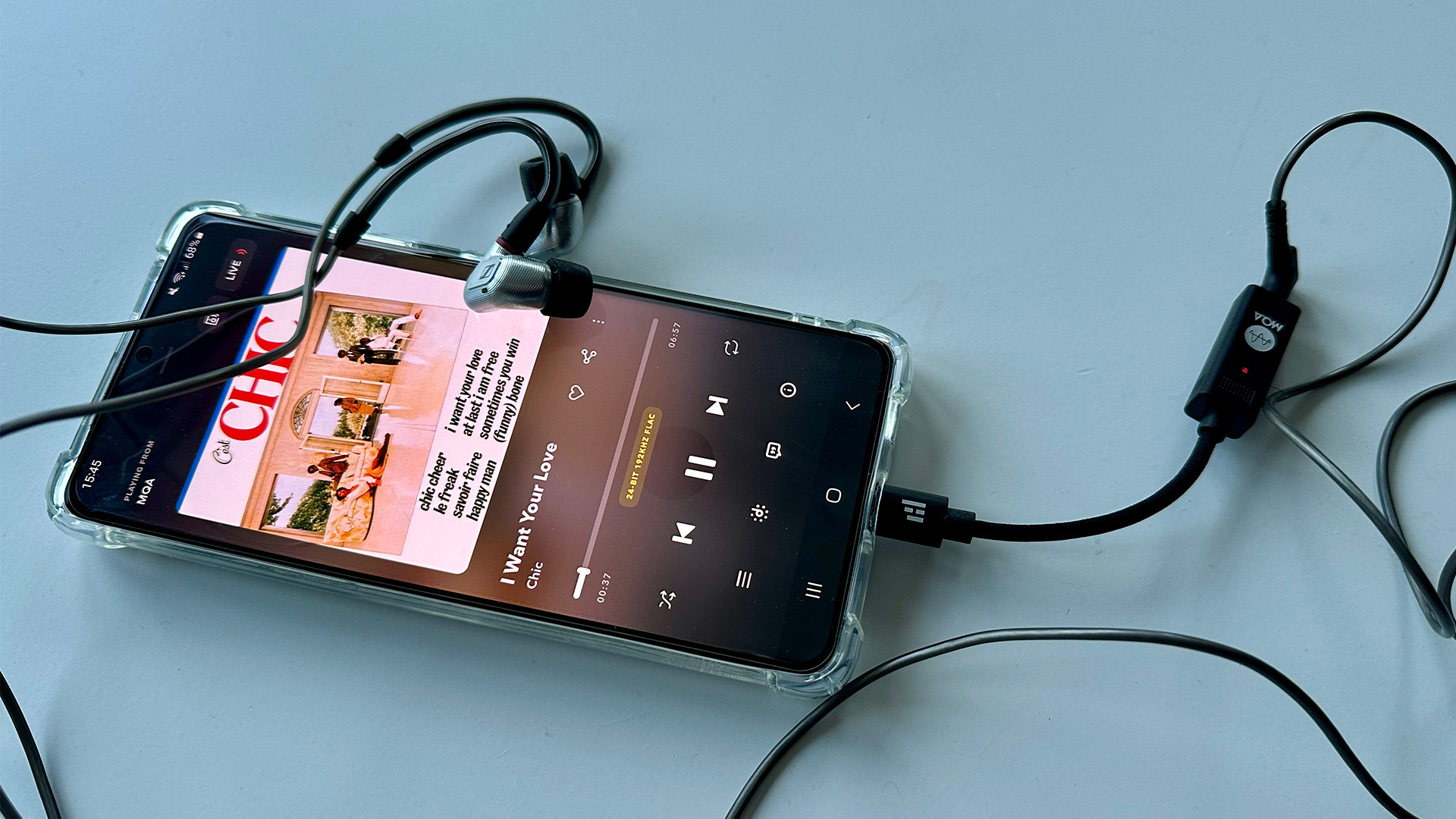
Specifications
Reasons to buy
Reasons to avoid
✅ You value portability: This is an incredibly small and minimal device. If you want discretion, this is it.
✅ You already have excellent headphones: Every device in this list works better with good headphones, but especially this one.
❌ You don't have a phone with USB-C: It's better to go for an option that will plug and play directly – although you could buy an adapter, of course.
❌ You want quality and quantity: It sounds fantastic but you don't get many features or extras for the money.
The Helm Audio Bolt USB DAC/headphone amp is a device that we found to be both small and elegant in its simplicity when we tested it. Like most of the DACs in this guide, it's designed to make the sound coming out of your laptop or smartphone far better than it otherwise would be. The good news with this option from Helm is that it's priced to make its talents available to as many people as possible and our top choice if you're looking for a portable USB-C DAC, especially for phones, that's not necessarily budget but is still affordable.
The Bolt is in its element when it comes to high-resolution audio content. It can handle 32-bit/384kHz, DSD256 and MQA stuff easily, generating enough power to drive most headphones we tested to workable level. It’s also genuinely portable, with a design that's small and light enough to slip in a pocket.
Overall, it delivers an enjoyable listen. Push up the volume to extremes and it can sound a little hard and two-dimensional, but otherwise we found it a pleasure to test. The levels of details are high here, frequency extension is impressive at either end of the range, and the soundstage it creates is convincing, not to mention fun.
Read the full Helm Audio Bolt review
Other portable DACs to consider
Campfire Audio Relay: We liked this DAC during testing. It's upfront and informative. However, like so much of what the Campfire Audio brand does, the sound won't be for everyone. It's a very specific sonic flavor. Read our full Campfire Audio Relay review for all of the details.
FiiO QX13: Take a look at our FiiO QX13 review and you'll see there's a lot to love here, expect open and detailed sound from a very well-specified little DAC option. The only problem? There are just so many fantastic rivals on the market now. Which means you can do better for the money.
iFi GO Bar Kensei: This is a beautiful steel swordsman of a DAC, but there were just a few issues with it through the top end, for us. We tested a second unit to make sure, but this turned out to be a disappointment by iFi's high standards, as our iFi GO Bar Kensei review digs into.
iFi iDSD Diablo: Elsewhere in iFi-land, the excellent iFi iDSD Diablo was superseded by the newer iFi iDSD Diablo 2, so while both are excellent, we swapped in the newer model as a worthy replacement in this guide. But this means that if you see a deal on the original, it might be a great little bargain, so we've given it a place in this little section.
iFi iDSD Diablo 2: Even better than the original Diablo above, this one delivers a neutral and direct sound when paired with some seriously high-quality headphones. Take a look at our iFi iDSD Diablo 2 review and you'll see it's a top pick if you're willing to pay top prices. It only leaves our guide because it's been replaced by another newer and slightly more impressive device from iFi, the Valkyrie.
Hidizs S8 Pro Robin: Hidizs launched this earlier in the year with a shockingly low price tag of just $99 in the US and £79 in the UK. Could the S8 PRO Robin knock the iFi Uno off as our top budget buy recommendation, given that it has the same hi-res support – PCM files of up to 32bit/384kHz resolution and DSD256? Well, you've seen the list, you know it didn't. The iFi Uno is simply a better-sounding, better-value buy all round, as you can read in our full Hidizs S8 Pro Robin review. Looks like Robin will remain a sidekick a little longer, at least.
How to choose the best portable DAC for you
OK, we'll level with you. This isn’t the most glamorous tech purchase you'll ever make. But that doesn’t mean there isn’t demand for it and that you shouldn't buy one. Au contraire, if you care about the quality of your music, you should!
New DACs are released all the time – large devices, smaller ones, those that are mains-powered and others that are battery-powered. You can get DACS for iPhones, as well as models with wired or wireless connectivity, too. We've explained all below, because we want you to make the right purchase for you and one you'll love for years to come.
In this guide we’re focusing on the best of the most portable DACs around. If you give any one of these fine items a listen, then we guarantee your ears will thank you.
What is a DAC?
A DAC converts digital audio files, like MP3, FLAC, DSD, or ALAC, into the analog sound you hear through headphones or speakers. It’s the component in your phone or audio device that translates digital data into sound.
While built-in DACs in smartphones are designed to balance size, battery life, and performance, they often deliver only acceptable sound quality – not exceptional. An external DAC can significantly enhance your listening experience, but as the variety of options shows, not all DACs are created equal.
What do I need a portable DAC for?
If you care about great sound and have quality headphones or speakers, a portable DAC is a worthwhile upgrade. While you could stick with how your phone, tablet, or computer sounds, audiophiles know that built-in DACs often fall short. If your music sounds underwhelming and you’ve recently switched devices, the built-in DAC in your new laptop, phone, or tablet might be to blame.
Another reason to invest in a portable DAC is if you use high-impedance headphones, which need extra power to perform at their best. These headphones, typically over 50 ohms, require more power than standard headphone jacks can provide. An external DAC helps with these headphones as it can work as a headphone amp to provide the extra power needed to drive a high-impedance pair of 'phones.
Do DACs improve the sound quality of phones?
Yes. Very much so.
There's already a DAC in your phone, but chances are it hasn't been designed solely for great audio: it's usually part of a balancing act for things like battery life, how much space is available inside the device, cost and other considerations. So you'll often find that even high priced phones have DACs that are good rather than great.
With an external DAC you're using hardware that's been designed with sound quality as the single most important feature. Flabby bass is tightened and tuned; abrasive treble is smoothed; mids punch more and the soundstage is more expansive. DACs usually support much higher bit rates than phone DACs do too, which is important if you're listening to hi-res audio.
Do DACs work with iPhones?
It's worth bearing in mind that some portable DACs won't work with iPhones – you may find that when you plug them in, you get an error message that says "the attached accessory uses too much power". If that's the case, you'll need to purchase a Lightning-USB 3 adaptor, and plug it into an outlet while using the DAC to give it the power it needs.
Alternatively, some DACs can be used with an iPhone without being plugged into an outlet - but you will still need an Apple Lightning to USB 3 Camera Adapter.
Do DACs work with Android phones?
As with iPhones, the answer is yes with a caveat: you'll need the right connector – many modern Android phones have USB-C but many DACs haven't moved to that connector yet, so you'll need to check what cables come with it – and you'll need sufficient power to drive it, something that's not always possible with some phones. For those you'll need an additional power source such as a powered USB hub.
Latest Updates
October 23, 2025
Refreshed the introduction. Added the FiiO BTR17 as a new entry , our 'best wireless option' pick. Switch the iFi iDSD Diablo 2 out as our 'money no object' entry for the iFi iDSD Valkyrie. Added several new options to the 'also consider' section, including the FiiO QX13, Campfire Audio Relay and that Diablo 2, as it's still well worth considering.
March 27, 2025
Refreshed the introduction. Added some links to our hi-res audio explainer, so readers can fully get to grips with why audiophile-grade sound matters, and to news about our upcoming iFi iDSD Valkyrie DAC review.
January 30, 2025
Refreshed the introduction. Added the iFi Go Link Max as our 'Best budget portable USB-C DAC' pick in the no. 1 spot. Moved the Helm Audio Bolt, which was previously in that top position, to the no. 8 pick as our 'best step-up portable USB-C' DAC option. Added a gallery of images to each entry so readers can get a better look at our recommendations before they decide.
December 3, 2024
Rewrote the introduction to this guide. Added 'buy it if/don't buy it if' advice blocks to each of our best DAC player entries to give readers a quick insight into which of the options might be best for them – as well as which to avoid. Edited our 'how to choose' advice in the Q&A section of the guide to make it easier to read and more helpful for anyone considering buying a DAC player.
August 2, 2024
Overhauled this guide to better tailor our recommendations based on specific DAC types, where you'd use them, and how affordable they are. Also added the iFi Zen DAC 3 as our best mid-range desktop option.
June 3, 2024
Added both this update log, an author block and updated our 'Also consider' section where I highlighted why the iFi GO Bar Kensei isn't on this list – yet. Swapped in the recently-reviewed iFi iDSD Diablo 2 for the original Diablo (which it has superseded).
April 4, 2024
Checked availability of current listings, all of which are in stock in the US, UK and Australia. Added in two new sections about recent DAC releases to consider and what a DAC is.
December 8, 2023
Added the iFi xDSD Gryphon, iFi Uno, Helm Audio Bolt to our rankings. Removed the iFi Zen and iFi hip-DAC, replacing it with its successor the iFi hip-DAC 3, and adjusted the format of this guide to include more easy navigation elements like the quick menu.
Sign up for breaking news, reviews, opinion, top tech deals, and more.

Becky became Audio Editor at TechRadar in 2024, but joined the team in 2022 as Senior Staff Writer, focusing on all things hi-fi. Before this, she spent three years at What Hi-Fi? testing and reviewing everything from wallet-friendly wireless earbuds to huge high-end sound systems. Prior to gaining her MA in Journalism in 2018, Becky freelanced as an arts critic alongside a 22-year career as a professional dancer and aerialist – any love of dance starts with a love of music. Becky has previously contributed to Stuff, FourFourTwo and The Stage. When not writing, she can still be found throwing shapes in a dance studio, these days with varying degrees of success.